|
In Taiwan, funerals and death rituals are very different that funerals in the west. Taiwan's funeral rites are influenced by Buddhism, Taoism, ancestor worship, and folk religion. In this blog, we will explore the different funeral rituals and rites, and let you know what you can expect at a Taiwanese funeral.
Foreword: Please note this blog and FAQ section are written from the perspective of a long-term American expat married to a Taiwanese spouse. Part of the facts for this blog have been taken from personal experience attending multiple funerals in Taiwan, and also from research such as Chinese anthropology classes and other research.
3 Comments
Dihua Street is Taipei City's biggest and oldest Old Street. Here you can find a large area with historical buildings and unique old-style shops. Also, there are many art spaces, museums, and restaurants to explore in the area. You should definitely make a stop in this historically rich area on your trip to Taipei.
Historical Background: The land that Dadaocheng (aka Twatutia in Taiwanese 大稻埕) stands on was once part of Basay tribal land. The Basay people had lived on the land for thousands of years before the first Chinese settlers. Sections of Dadaocheng indicate that there were settlements here during the Dutch rule in the 1600s. The first Chinese settlers came to the area in the mid-1800's during the Qing Dynasty. They created a public area for drying rice and grain, called Dadaocheng (大稻埕) from which the place gets its name, which also became the central market in the area. The earliest trading shops were built in 1851, mainly selling rice, sugar, camphor, and tea. Dihua Street (迪化街), or center street (中街) was created around this time, making it the oldest street in Taipei. In 1859 the City God Temple was completed, the religious center of the area, and many streets sprouted out of the area. Most of the buildings were one story and made of red brick in Fujian style, and later western style houses were built. In 1891, the first train connecting Keelung and Taipei was completed. In 1902, Dadaocheng station was completed on the Tamsui Railway line. Tea and rice were the major exports from Dadaocheng during the Japanese era. After WWII, the main street, known as Center Street (中街) was changed to Dihua Street, to remember Dihua City in Xinjiang. Dihua Street is an important place to buy traditional food supplies and ingredients. It is particularly popular during Chinese festivals. Hours: About 9 AM to 7 PM. Price: Free Tours: You can book a walking tour of Dihua Street on TripAdvisor here, Klook here, or KKday here. You can also book a Changing Cheongsam Tour at Dadaocheng on TripAdvisor here. There are many tours of Dihua Street, Dadaocheng, and other spots in Taipei available on Klook here or KKday here. Hotels in Taipei: High end: We have stayed at and recommend the Yuanshan Grand Hotel, once the tallest building in Taiwan and still the most grand (book on Booking.com here, Tripadvisor here, or Agoda here). We have also stayed at and recommend the Grand Hyatt (book on Booking.com here, Tripadvisor here, Agoda here, or Hotels.com here), Marriot (book on Booking.com here, Tripadvisor here, Agoda here, or Hotels.com here), Sheraton (book on Booking.com here, Tripadvisor here, Agoda here, or Hotels.com here), Shangri-la (book on Booking.com here, Tripadvisor here, Agoda here, or Hotels.com here), and Regent (book on Booking.com here, Tripadvisor here, Agoda here, or Hotels.com here), which are all very high quality hotels in the middle of Taipei City. We also recommend Fullon Hotel which has locations in Tamsui and Fulong near the beach (book on Booking.com here, Tripadvisor here, Agoda here, or Hotels.com here). Budget Hotels: We have also stayed at and recommend Fu Chang Hotel in Ximending, which is within walking distance of Ximending shopping district (book on Booking.com here, Tripadvisor here, or Agoda here). We have also stayed at and recommend Hai Xia Your Home which is right in front of Fulong Beach (book on Booking.com here, Tripadvisor here, Agoda here, or Hotels.com here). Looking for a hotel? We recommend booking through Booking.com here, which provides the best quality selection of accommodation in Taiwan. Find out where to stay in our Taiwan hotels guide or search for the best hotel deals in Taiwan here. Just to let you know, if you book using the links above, we get some commission at no cost to you, and you can help support our blog. Some of the Klook links may not work if you are using an Ad blocker. You can click here to receive $5 USD on your first Klook purchase. How to get there: By MRT: From Beimen MRT station, walk north to Tacheng Street. Keep going until the street becomes Dihua Street (about 500 meters). You can purchase a discount easy card to use on the MRT from Klook here or KKday here. You can also book an MRT travel pass on Klook here. By Car/Scooter: Take Shimin Blvd. west to Tacheng Street. Keep going until the street becomes Dihua Street (about 500 meters). There is paid car parking on Shimin Blvd. Looking for scooter rental in Taipei? You can search on Klook here or KKday here to search for options. You can also check out our scooter rental guide here. If you are looking for car rentals, you can also search Qeeq here, Klook here, or KKday here. You can also check out our car rental guide here. By Bicycle: Cycling is the best way to enjoy Taiwan's landscapes if you have the time and energy. Looking for bicycle rentals in Taiwan? You can use Taiwan's many Youbike sharing stations, or search for rentals on KKday here, and search for tours on Klook here. You can also check out our Taiwan cycling guide here. You can also book a Sunset Riverside Bike Ride and Historical Tour, 4 Hour Cycling in Taipei, Ultimate 8-Hour Cycling City Tour, or Taipei City Bike Tour with Night Market Experience on TripAdvisor here. For more information, check out our Taiwan transportation guide here. Map: Please see below:
The Lotus Pond in Zuoying District of Kaohsiung is one of the most beautiful scenic areas in Taiwan. Much of the lake is full of traditional Chinese temples, gardens, and architecture. Because of its size, it cannot be properly appreciated by only going there for one afternoon; there are simply too many things to see and do there. In this blog, we will provide you a detailed virtual tour of the entire lake.
Historical Background: Lotus Pond was originally a small natural pond next to what is now the Zuoying Confucious Temple. Starting from 1686 after the Qing Dynasty captured Taiwan from the Kingdom of Tungming, the pond was gradually expanded for water storage and irrigation purposes. Also, lotus plants were cultivated on the pond, giving it its name. It was known as one of the eight beautiful scenes of Fengshan Old City. It also became a hotbed for temple building, and now over 20 temples stand by the lake. In 1951 the Qiming Temple, Spring and Autumn Pavilions, and Guanwu God Temple were completed. In 1976 the Dragon and Tiger pagodas were completed. In 1978 Wuli Pavilion was completed. Every year over a million visitors come to the park, although these numbers have gone down in recent years due to aging infrastructure and lack of new attractions. It is a haven for retired Taiwanese people to come and relax. Due to its close proximity to the Zuoying Jiucheng TRA station and Zuoying HSR station, it is also a popular attraction for tourists in Kaohsiung. Price: Free You can book water sport activities at the Lotus Pond on Klook here or KKday here. Hours: 8 AM - 6 PM (Dragon and Tiger Pagodas) Accommodation We have stayed at and recommend Chao She Hotel (you can book on Agoda here, Booking.com here, Hotels.com here, or Expedia here) IHI Sanduo Travel Hotel (you can book on Agoda here, Booking.com here, Hotels.com here, or Expedia here), and Mingli Hotel (you can book on Agoda here, Klook here, or Hotels.com here) which are three inexpensive and high quality choices in downtown Kaohsiung. I also have stayed at and recommend Kaohsiung Meinong Rabbit Paul Homestay B&B (you can book on Agoda here, Booking.com here, or Trip.com here), a quiet B&B in rural Meinong, and Chengching Lakeside Resort (you can book on Agoda here, Booking.com or Trip.com here)and the Grand Hotel Kaohsiung (you can book on Agoda here, Booking.com here, Hotels.com here, or Expedia here) which both offer breakfast buffet and free entrance into Chenqing Lake Park. I have also stayed at the 85 sky tower which offers great views of the city; you can search for rooms in the 85 sky tower on Agoda here, Booking.com here, Hotels.com here, Expedia here, or Trip.com here). Find out more about where to stay in our Taiwan hotels guide or search for the best hotel deals in Taiwan here. We recommend booking through Agoda here, which provides the best quality selection of accommodation on the islands. You can also book Wifi and SIM cards for Taiwan on Gigago here. Need travel insurance? Compare prices on Insubuy here. Tours: You can find more tours and activities in Kaohsiung such as Pier 2, Meinong Hakka Museum, Hamasen Railway Museum, Suzuka Circuit Park, i-Ride Kaohsiung Visual 5D Flying Theater, National Science and Technology Museum , Senya Village Restaruant, Austin Land, Ski School Indoor Ski Slope, and many more on Klook here or KKday here. Just to let you know, if you book using the links above, we get some commission at no cost to you, and you can help support our blog. You can click here to receive $5 USD on your first Klook purchase. How to Get There: By Car/Scooter: From central Kaohsiung, go north on provincial highway 17 and then turn north on Xinzhuang 1st Road. The pond is on your left and is hard to miss. There is free and paid parking all around the lake. Looking for scooter rental in Kaohsiung? You can check out Klook here or KKday here to search for options. You can check also out our scooter rental guide here. If you are looking for car rentals, you can search Qeeq here, KKday here, or Klook here. You can also check out our car rental guide here. By Train: From the north you can walk to the pond from Zuoying HSR station, or from the south you can walk there from Zuoying Jiucheng TRA Station. You can book tickets to travel to Kaohsiung via inter-city bus on Klook here. You can book tickets to Kaohsiung via high speed rail (HSR) on Klook here or KKDay here. Book tickets via the normal train (TRA) on Klook here. You can also book a Kaohsiung Travel pass here. By Bicycle: Cycling is the best way to enjoy Taiwan's landscapes if you have the time and energy. Looking for bicycle rentals in Taiwan? You can search on KKday here and search for tours on Klook here. You can also check out our Taiwan cycling guide here. Map:
If you only have a few days in Taiwan and you want to go somewhere outside of Taipei, you should definitely go to Taroko National Park. On an island full of mountains, rain forests, beaches, and abounding natural beauty, Taroko might just take the top spot as the most beautiful scenic area in Taiwan.
Taroko National Park is well known for its amazing marble cliffs and canyons carved out by the Liwu River. It is also a popular spot for hiking, rafting, and river tracing. If you have the time, come to the East coast and see it. If you don't have time, then make some time! History and Background: Taroko National Park is well known for its marble cliffs and canyons, and is also known as "The Marble Gorge." Millions of years ago, the rock we see today was sediment at the bottom of the Pacific Ocean, but oceanic and tectonic pressure turned it into limestone, and later into marble. Later the Eurasian plate was uplifted where Taiwan is today, and a gorge was cut out of the limestone thanks to the Liwu River. Taroko means "human being," from the Truku tribal language. Originally the Tupido Tribe settled in the area of what is now Tianxiang Taiti mesa. They built the Tupido Tribe Trail which was only 30 cm wide, and resided there until they were massacred by the Japanese in 1914. In 1917, the Japanese expanded the original trail made by the Tupido Tribe to 1.5 M and forced aboriginal tribesmen to carry goods along the trail to the east coast. This is now the Zhuilu Old Trail. Currently only 3km of the trail is open to the public. The Japanese created a national park in the Area in 1937, which was disestablished by the ROC in 1945, and then reenstated in as a national park in 1986. When to visit? Hualien is great year round, but it can get a little hot in the summer, and Typhoon season and heavy rain season lasts from about May to October. If you are afraid of the heat and rain then you can visit during winter when the temperatures are mild and the climate is usually dryer. Sponsored Links Where to stay? Most of the accommodation you will find is near the city center. If you only want to visit Hualien City and Taroko Gorge, you can consider booking a hotel near downtown, walking or cycling around the city, and taking a bus to Taroko Gorge. We have stayed at and recommend Dream Taiwan Homestay (Agoda / Booking.com / Expedia / Hotels.com), a high quality hostel for the money in downtown Hualien, Farglory Hotel (Agoda / Booking.com / Expedia / Hotels.com), right next to Farglory Ocean Park with amazing views of Hualien, and Goldenflower B&B (Agoda / Booking.com) in Yuli right next to Sixty Stone Mountain. You can find out where to stay in our Taiwan hotels guide or search for the best hotel deals in Taiwan here. How to get there: By Car: From Taipei, Take National Highway 5 to Yilan and then drive on the Suhua Highway 9 to Hualien. A few miles before Hualien City, the gorge will be on your right. By Train: Take the train to Hualien station, and from there you can rent a scooter or car, or take a tour bus to the gorge. For more travel information see here. You can book tickets to travel to Hualien via inter-city bus on Klook here. Book tickets via the normal train (TRA) on Klook here. Need travel insurance? Compare prices on Insubuy here. How to get around in Taroko Gorge: As always, we recommend renting a scooter as the best way to see Taiwan. However, you can also a great deal of Tainan by taking the train, inter-city bus, local bus, biking, or just walking. Getting around in a car is also a convenient option as there is plenty of parking pretty much everywhere in this less crowded county. By Bus: You can book a shuttle bus to Taroko Gorge from Hualien on Klook here. Scooter Rental: Looking for scooter rental in Hualien? You can search KKday here or Klook here to look for options. You can also check out our scooter rental guide here. Car Rental: If you are looking for car rentals in Hualien, you can also search Klook here or KKDay here. You can also check out our car rental guide here. Tours: You can find more tours and activities in Hualien such as Surfing, Paragliding, SUP / Paddle Boarding, Kayaking, Canoeing, River Tracing, River Rafting, Whale Watching, Snorkeling, Diving, ATV / 4-wheeling, Paintballing, Farm Dream Estates Zoo, Water Biking, Oyster Harvesting, Shrimp Harvesting, Indigenous Experience, Glamping, Cycling, Ziplining and much more on Klook here or KKday here. You can also book Wifi and SIM cards for Taiwan on Gigago here. Just to let you know, if you book using the links above, we get some commission at no cost to you, and you can help support our blog. You can click here to receive $5 USD on your first Klook purchase. Hours: 8:30AM-5PM (Zhuilu old trail is open from 7AM to 10PM). Flying a Drone? Apply for a drone permit here. Price: Free! (Except Zhuilu old trail, which is 200 NT per adult. See below for more info.) Map: Please see below:
Cheng Ching Lake (aka Cheng Cing Lake or Ching Qing Lake) in Kaohsiung is one of the most beautiful parks in Taiwan. Much of the lake is full of traditional Chinese gardens and architecture. Because of its size, it cannot be properly appreciated by only going there for one afternoon; there are simply too many things to see and do there. In this blog, we will provide you a detailed virtual tour of the entire lake.
People often don’t realize that Kaohsiung has a lot to offer to tourists. Many of the places down south aren’t represented as well in English as other sites in Taipei, which is why we want to help everyone realize what a great place it is. I used to live in Kaohsiung and exercised at Cheng Ching Lake daily, and it was like living in paradise every day. There are many Kaohsiung residents that visit the lake daily for free, and I envy them. Historical Background: Cheng Ching lake is the largest lake in Kaohsiung. Originally it was only a small irrigation pond, but in 1940 the Japanese diverted water here from the Gaoping River to act as a water supply for the surrounding area. During that time it was called Dabei Lake (大埤湖), however Chiang Kai-Shek (the leader of the ROC) renamed it Cheng Ching Lake (澄清湖) in 1963. The ROC army used the lake as a base shortly after the Chinese Civil War, and built an underground tunnel and bunker to prevent against nuclear attack, which has now been converted into the Cheng Ching Lake Exotic Marine Life Museum. The lake contains a number of memorials to ROC soldiers, such as memorial plaques, army veterans mausoleum, and Fuguo island to commemorate soldiers that fled to the island of the same name in Vietnam during the Chinese Civil War. The lake is meant to resemble Xihu (西湖, west lake) in Hangzhou, China. Chiang Kai-shek built a winter chateau on the lake, one of 30 guests houses that were built for him in Taiwan. Surrounding the lake are a number of other notable sites including the Kaohsiung Yuanshan Hotel Resort, Cheng Ching Lake Baseball Field, Cheng Ching Golf Club, Kaohsiung number 7 waterworks station, Kaohsiung Chang Gung Memorial Hospital, and Cheng Ching Lake Youth Activity Center. Chengqing Lake is also a water source for a large area of Kaohsiung. Because of this (as well as risk of drowning), fishing and swimming in the lake are forbidden. Every year over a million visitors come to the park, although these numbers have gone down in recent years due to aging infrastructure and lack of new attractions. It is a haven for retired Taiwanese people to come and relax, and more and more young people seem to forget it exists. Price: 100 NT per person 50 NT for students, 60/100 NT for cars (there is a discount for cars on weekdays), and 30 NT for scooters. Kaohsiung residents: free! Chengching Lakeside Resort: 1,000-3,000 NT per night (you can book on Agoda here, Booking.com or Trip.com here) Grand Hotel Kaohsiung: 3,000-10,000 NT per night (you can book on Agoda here, Booking.com here, Hotels.com here, or Expedia here) Hours: 4 AM - 9 PM (no entry after 6 PM) How to Get There: By Car/Scooter: There are two entrances to the park, one on the north side and one of the south side. There are plenty of places to park once inside. The price is 60/100 NT for cars (there is a discount for cars on weekdays), and 30 NT for scooters. Looking for scooter rental in Kaohsiung? You can check out Klook here or KKday here to search for options. You can check also out our scooter rental guide here. If you are looking for car rentals, you can search Qeeq here, KKday here, or Klook here. You can also check out our car rental guide here. By Bus: From the Weiwuying MRT station, you can take the 70A bus straight to the main entrance. You can book tickets to travel to Kaohsiung via inter-city bus on Klook here. You can book tickets to Kaohsiung via high speed rail (HSR) on Klook here or KKDay here. Book tickets via the normal train (TRA) on Klook here. You can also book a Kaohsiung Travel pass here. Accommodation We have stayed at and recommend Chengching Lakeside Resort (you can book on Agoda here, Booking.com or Trip.com here) and the Grand Hotel Kaohsiung (you can book on Agoda here, Booking.com here, Hotels.com here, or Expedia here) which both offer breakfast buffet and free entrance into Chenqing Lake Park. Find out more about where to stay in our Taiwan hotels guide or search for the best hotel deals in Taiwan here. We recommend booking through Agoda here, which provides the best quality selection of accommodation on the islands. You can also book Wifi and SIM cards for Taiwan on Gigago here. Need travel insurance? Compare prices on Insubuy here. Tours: You can find more tours and activities in Kaohsiung such as Pier 2, Meinong Hakka Museum, Hamasen Railway Museum, Suzuka Circuit Park, i-Ride Kaohsiung Visual 5D Flying Theater, National Science and Technology Museum , Senya Village Restaruant, Austin Land, Ski School Indoor Ski Slope, and many more on Klook here or KKday here. Just to let you know, if you book using the links above, we get some commission at no cost to you, and you can help support our blog. You can click here to receive $5 USD on your first Klook purchase. Map:
The Matsu Archipelago is a group of small islands off the coast of China that belong to Taiwan. Acting for a long time as military outposts for Taiwan, the islands have recently opened to tourists. Here you can find traditional stone house villages, magical "blue tear" bioluminescent phenomena, wild sika deer, military museums, a Mazu memorial park including the largest Mazu statue in the world, a variety of local food, and much more to explore.
Background: Thousands of years ago, stone aged peoples once inhabited the Matsu Islands. These stone aged people later disappeared. The Matsu islands were inhabited again around the Song Dynasty (990 - 1200 AD) by Chinese fisherman, the descendants of whom still inhabit the islands today. Because the Goddess Mazu's corpse washed ashore on this island, Nangan is also known as Matsu Island. During the Chinese Civil War, Matsu was used as a military outpost for the retreating ROC. During the years that followed, it withheld shelling and threats of invasion from China, helping to keep Taiwan free of communist control. In 1992 after cross-strait relations had warmed up, martial law was lifted on the islands and tourists were allowed to visit. In the year 2000, a ferry link with Fuzhou started to provide constant China Mainland visitors to the island, as part of the three links with China. In 1994 Beigan Airport was opened and was the only airport in Matsu for 9 years. In 2003, the Nangan Airport was opened, which significantly lowered the number of travelers to Beigan. However fast and convenient boat travel has made it so that most tourists travel to both islands. Matsu (or officially Lienchiang County of Fujian Province 連江縣) consists of 36 islands or islets, with 5 major islands: Nangan, Beigan, Xiju, Dongju, and Dongyin, and minor islands including Daqiu, Xiaoqiu, Gaodeng, and Liangdao. Nangan has a population of 4,000 people and is the largest island in Matsu in terms of population and geographical size. Beigan Island is the second largest island in Matsu (behind Nangan), and has a population of about 2,500. Xiju and Dongju Islands sit next to each other and have a combined population of 1,500 people. Dongyin is the third largest island in terms of size and population, with about 1,300 people. Daqiu is a small island near Beigan with a population of 1 human and about 300 wild sika deer. Xiaoqiu is another small uninhabited rocky islet next to Daqiu. Gaodeng Island and Liangdao Islands are also sizable islands in the chain but are military islands that are currently closed off to tourists. How to get there: The easiest way to get around the islands is to take a plane from Songshan Airport or by boat from Taipei or Keelung Nangan and then go island hopping from there. Nangan is the main transportation hub for all the islands. You can book flights to Matsu on Trip.com or CheapO Air. You can also search for cheap flights in Taiwan on Kiwi here. You can book ferry tickets to Matsu on KKday here. Dongyin Island: By Boat: There are daily ferries from Keelung Harbor that usually take an overnight trip to Nangan, passing through Dongyin Island. The price for a one-way ride is 400-2000 NT depending on the type of accommodation you want on the boat. Boats from Nangan leave twice a day and take 2 hours. The price for a one-way ride is 350 NT. Beigan Island: By Boat: There are boats from Nangan Fu'Ao Harbor (南竿福奧港) to Beigan Baisha Harbor (北竿白沙港) every hour from 7 AM to 5 PM. There are no daily routes to Beigan from other islands (except Daqiu). You can book tickets between Nangan and Beigan Islands on KKday here. By Plane: There are flights to and from Taipei Songshan Airport three times a day via Uni Air. You can book flights on KKday here, Trip.com here, CheapO Air here, or Kiwi here. Daiqu Island: Public Ferry from Nangan Fu'Ao Harbor (福澳港) (April to October): 350 NT round trip per person (Stops at Baisha Harbor in Nangan) Nangan departure times: 9:50 AM, 1:30 PM, Daqiu departure times: 12:10 Noon, 3:40 PM Trip takes about 20 minutes. You can book a ferry to Daqiu Island on KKday here. Public Ferry from Beigan Qiaozi Harbor (橋仔港) (May to October): 300 NT round trip per person Beigan departure times: 8:30 AM, 2:30 PM, Daqiu departure times: 10:30 AM, 4:30 PM https://hotels.matsu.idv.tw/ferry.php Trip takes about 10 minutes. Chartered ferries: Around 300 NT per round trip. You can book tickets between Nangan and Beigan Islands on KKday here. Nangan Island: By Boat: There are daily ferries from Taipei or Keelung that usually take an overnight trip to Nangan, passing through Dongyin Island. There are boats from Beigan Baisha Harbor (北竿白沙港) to Nangan Fu'Ao Harbor (南竿福奧港) every hour from 7 AM to 5 PM. You can book tickets between Nangan and Beigan Islands on KKday here. By Plane: There are flights to and from Taipei Songshan Airport three times a day via Uni Air. You can book flights on KKday here, Trip.com here, CheapO Air here, or Kiwi here. Dongju and Xiju Islands: By Boat: Ferries from Nangan leave every 3 hours, with three trips per day. The trip takes about an hour. Price is 200 NT one way. Price (to Nangan): By Boat: 500-2000 NT per person (one way from Taipei or Keelung) 160 NT per person (one way from Beigan) By Plane: About 2000 NT (one way from Taipei). There are flights to and from Taipei Songshan Airport three times a day via Uni Air. You can book flights on KKday here, Trip.com here, CheapO Air here, or Kiwi here. How to get around the islands: Matsu has large, hilly islands and it would be very hard to get around on foot or bicycle. We recommend one of the following. By Ferries: The only way to get to smaller islands without airports is by ferry. You can check KKday here for ferry tickets or buy them at the harbor. By Scooter: We recommend riding a scooter as your #1 choice. It's fast, convenient, and there isn't much traffic on the island. A scooter will cost about 500 NT per day to rent. You can rent a scooter on Klook here or KKday here. When braking on hills, use both brakes, otherwise, you could lose traction on one tire and skid. Don't stop or park on a slope. Also, some hills that are too steep are closed off for scooters. You can also check out our scooter rental guide here. By Car/Taxi: You can rent a car or hire a taxi for 200O NT per day. If you are looking for car rentals, you can also search Qeeq here, Klook here, or KKday here. You can also check out our car rental guide here. By Bus: There are buses that go around the islands, but wait times can be 30 minutes or more. By Bicycle: Cycling is the best way to enjoy Taiwan's landscapes if you have the time and energy. Looking for bicycle rentals in Taiwan? You can search on KKday here and search for tours on Klook here. You can also check out our Taiwan cycling guide here. Hotels: We have stayed at and recommend Fu Hwa Homestay on Nangan (you can book on Agoda here, Booking,com here, or Trip.com here), and B&B of Blueshine on Beigan (you can book on Agoda here, Booking,com here, or Trip.com here). Both places were excellent, and provided us a car ride to and from the airport for free. You can also check out our Taiwan hotels guide here. Looking for a hotel? We recommend booking through Agoda here, which provides the best quality selection of accommodation on the island. You can also book Wifi and SIM cards for Taiwan on Gigago here. Need travel insurance? Compare prices on Insubuy here. When to go: We recommend going between April and June when the "blue tear" phosphorescent microbes in the water will be the most visible at night. Also, winters can be cold and windy, and summers very hot, and there could also be typhoons in the summer and fall. Tours and Activities: Beihai Tunnel Rocking Boat: about 150 NT Blue Tears Museum: about 300 NT SUP/Paddle experience: about 2300 NT You can search for other tours and activities on KKday here or Klook here. Just to let you know, if you book using the links above, we get some commission at no cost to you, and you can help support our blog. You can click here to receive $5 USD on your first Klook purchase. Map: Please see below:
For you expats or foreigners who have never left Taipei, Changhua is a large mostly rural county in central Taiwan. For years I myself never visited, because I didn't know what was there and had no reason to go. It turns out there are quite a few attractions here in this secret paradise.
Below I will list some of the best places in Changhua that I have visited. I will be sure to update this blog as I visit more places later. Historical Background: Before Han settlement, Changhua was inhabited by native peoples. During the Dutch era in Taiwan, a well was made to tap into the Zhuokou River water table. The Red Hair Well was made around 1611 by Dutch colonizers and was often used by Dutch soldiers and missionaries, During the Qing Dynasty, the city of Lukang became an important trading port, because of the depth of the water and the fact that it was closer to Fujian province than other cities in Taiwan. The main product shipped to Fujian was rice. In the 1800s, Lukang was Taiwan's second largest city, with as many as 20,000 residents, even more than Banka (modern day Taipei) and second only to Tainan. Later on, the port began to silt in, and the railroad bypassed the city, meaning that economic activity here went downhill. However because the city has changed so little in the past 200 years, it has become a cultural relic preserved from the past. The city also has over 200 temples. After the railroad was moved to Changhua City, it became the most important economic region in the county. Despite being the smallest county in Taiwan by area, Changhua County is the most populous county in Taiwan. It is often described as being part of the Taichung-Changhua metropolitan area. How to get around in Changhua? As always, we recommend renting a scooter as the best way to see Taiwan. However, you can also a great deal of Changhua by taking the train, inter-city bus, or local bus. Getting around in a car is also a convenient option as there is plenty of parking pretty much everywhere in this less crowded county. By Scooter: Looking for scooter rental in Changhua? Check out Klook here or KKday here to search for options. You can also check out our scooter rental guide here. By Car: If you are looking for car rentals, you can also search Qeeq here, Klook here, or KKday here. You can also check out our car rental guide here. By Bus/Train: You can book tickets to travel to Changhua via inter-city bus on Klook here. You can book tickets to Changhua via high speed rail (HSR) on Klook here or KKDay here. Book tickets via the normal train (TRA) on Klook here. By Bicycle: Cycling is the best way to enjoy Taiwan's landscapes if you have the time and energy. Looking for bicycle rentals in Taiwan? You can search on KKday here and search for tours on Klook here. You can also check out our Taiwan cycling guide here. Accommodation: We have stayed at and recommend Guide Hotel Changhua Jhongjheng, which is one of our favorite hotels in all of Taiwan, with great quality and service right in downtown Changhua. (book on Agoda here, Booking.com here, Hotels.com here, Expedia here, or Trip.com here) Looking for a hotel? We recommend booking through Agoda here, which provides the best quality selection of accommodation on the islands. Find out where to stay in our Taiwan hotels guide or search for the best hotel deals in Taiwan here. You can also book Wifi and SIM cards for Taiwan on Gigago here. Need travel insurance? Compare prices on Insubuy here. Tours: Tours and activities in Changhua include Magical Mushrooms Leisure Farm, Cheng Mei Cultural Park, Changhua Love Farm, Gushengwu Paleontology Park, Taiwan You Good School of Cookie, Baiguoshan Amusement Park, Yunhe Starry Sky View Restaruant , Tianzhong, Yakuta Experience , Qingshui Hot Spring Glamping, Fruit Picking , Tonight Star Leisure Farm, Tianweiwang Scenic Spot, and more. You can find more tours of Changhua on Klook here or KKday here. Just to let you know, if you book using the links above, we get some commission at no cost to you, and you can help support our blog. You can click here to receive $5 USD on your first Klook purchase. Map: You can see a map of all the places that we will visit in this blog below:
Douliu Tourist Night Market is the largest night market in Yunlin County and the largest night market in Taiwan by number of stalls available. Even though it is only open three nights a week, there are hundreds of stalls that feed thousands of people when it is open. Popular foods here include Taiwanese steak and eggs, sausage, stinky tofu, and many other Taiwanese night market staples.
Historical Background: Before Chinese settlers came to the area, Yunlin was inhabited by the Hoanya (洪雅族) native tribespeople, who named the area Tawrag. During the Dutch era in Taiwan in the 1600s, Chinese farmers first began to move here. The native people named the area and translated Tawrag into Taiwanese as Táu-la̍k-mn̂g (Douliumen 斗六門 in Mandarin). The area was also Dutch control during the Dutch colonization of Taiwan. By the Qing Dynasty, Douliumen had become a sizable community mostly comprised of Hoanya Aborigines, but more and more Chinese merchants began to set up shops in the city. During the Douliumen Battle in 1862, the settlement was taken over by rebels led by Dai Chaichun but was retaken by the Qing Army in 1863. After the Japanese took control of Taiwan in 1895, anti-Japanese forces fought the Japanese in Douliu as part of the Yiwei War. During the ROC era, Yunlin County was established in 1950 and Douliu was made the County Seat. With over 100,000 people, Douliu is the most populous administrative region in Yunlin. Douliu Tourist Street Night Market began operations at the end of 2021. Before that, Douliu's Renwen Night Market (斗六人文夜市) was the largest in Yunlin. Most of the stalls at Renwen Night Market moved to the new location. Douliu Tourist Night Market includes three different parking lots and nearly 1000 stalls, making it the largest night market in Taiwan when it began operations. The night market is just one block away from the National Yunlin University of Science and Technology (國立雲林科技大學) meaning that there are plentiful students seeking cheap night market snacks nearby. In March 2024, the night market began to open on Sundays too. Hours: Tuesday, Saturday, and Sunday from 4 PM to 12 Midnight Price: Free Where to stay: We have stayed at and recommend Ai Ni Ya Hotel, with great quality and service right in downtown Beigang (book on Agoda here or Booking.com here). We also recommend the Grand Earl Hotel, a high class hotel in central Douliu (book on Agoda here or Booking.com here) Looking for a hotel? We recommend booking through Agoda here, which provides the best quality selection of accommodation on the islands. Find out where to stay in our Taiwan hotels guide or search for the best hotel deals in Taiwan here. Tours in Yunlin: Tours and activities in Yunlin include Janfusun Fancy World Amusement Park, Kite Surfing, Tree Climbing , Chaoyang Green Energy Farm, Sam Siu Garden, Pink Castle Park, Gukeng Green Tunnel, Caoling Highway, and more. You can find more tours of Yunlin on Klook here or KKday here. Just to let you know, if you book using the links above, we get some commission at no cost to you, and you can help support our blog. You can click here to receive $5 USD on your first Klook purchase. How to get there: By Scooter: From Provincial Highway 1, go west to Douliu. The night market is on the south end of town in the middle of some farmer's fields. There is free scooter parking near the night market. Looking for scooter rental in Yunlin? Check out Klook here or KKday here to search for options. You can also check out our scooter rental guide here. By Car: From National Freeway 3, get off at the Douliu Exit and keep going west until you reach Douliu City. From Provincial Highway 1, go west to Douliu. The night market is on the south end of town in the middle of some farmer's fields. There is limited free parking nearby and paid parking near the night market. If you are looking for car rentals, you can also search Qeeq here, Klook here, or KKday here. You can also check out our car rental guide here. By Train: The Night Market is within walking distance of Douliu TRA Station. Book tickets via the normal train (TRA) on Klook here. You can also book tickets to travel to Yunlin via inter-city bus on Klook here. By HSR: From Yunlin HSR Station, you can take bus 201 for about 40 minutes to Douliu TRA Station. The Night Market is within walking distance of the old street. You can book tickets to Yunlin via high speed rail (HSR) on Klook here or KKDay here. By Bicycle: Cycling is the best way to enjoy Taiwan's landscapes if you have the time and energy. Looking for bicycle rentals in Taiwan? You can search on KKday here and search for tours on Klook here. You can also check out our Taiwan cycling guide here. Map: Please see below:
Longtan Lake is a beautiful scenic lake in the middle of Longtan District of Taoyuan. Here you can find majestic scenery, stroll across five bridges around the lake, enjoy local cuisine, and marvel at the Longtan temple which sits on an island in the middle of the lake. It is also the location of boat races during the Dragon Boast Festival. It is a great place to spend an afternoon with the whole family.
Brief Historical Background: Longtan Lake is man made, and was created for irrigation purposes in 1748 by local leader Zhimuliu. During the Qing Dynasty, the lake was called Lingtanpi in honor of the local temple at the time, but was changed to Longtan during the Japanese era likely as a mistake since the name sounds the same in Taiwanese. The Lake spans 18 Hectares and is about half a meter deep. After the construction of the suspension bridge in 1971 and Nantian Temple in 1972 on a man made island in the lake, the lake soon became a major tourist attraction in the area. In the summer, a child's splash pool opens on the southern side of the lake. There are also bike paths, a children's playground, walking trails, a music memorial hall, and paddle boat rentals. The area Hours: 24/7 Longtan Dragon Boat Races: June 8th-10th 2024 Check out our full guide to Taiwan's dragon boat festival here. Price: Free Where to stay: Looking for a hotel in Taoyuan? We recommend the Novotel Taipei Taoyuan International Airport which has great service and is conveniently located right next to Taoyuan Airport, the MRT, and HSR station (you can book on Agoda here or Booking.com here). We also recommend the Fullon Hotel Taoyuan which also has great service and is located in downtown Taoyuan City (you can book on Agoda here or Booking.com here). Looking for a hotel? We recommend booking through Booking.com here, which provides the best quality selection of accommodation in Taiwan. Find out where to stay in our Taiwan hotels guide or search for the best hotel deals in Taiwan here. Activities in Taoyuan: Ice Skating, Rock Climbing, Mountain Climbing, Cycling, High Ropes, Ziplining, Archery, Vietnamese BBQ, Batting Cages, Glamping, Van Camping, Photo Shoot, Turkish Mosaic DIY, Thai Massage, Painting, Baking, Go Karting, Imax Theater, Japanese Style Buffet, Tourist Factory Experience, peach and fruit picking, Ring-making DIY, handmade popsicle DIY, and more on on Tripadvisor here, Klook here, or KKday here. How to get there: By Car: Take National Freeway 3 to Longtan. The pond is near the city center. There is limited paid parking near Nantian Temple and also other paid parking nearby. If you are looking for car rentals, you can also search Qeeq here, Klook here, or KKday here. By Scooter: Take Provincial Highway 3 to Longtan, then continue southwest until you reach the lake. Looking for scooter rental in Taoyuan? Search Klook here or KKday here to look for options. By Bus: There are many buses that leave from Zhongli TRA station to Longtan. The ride takes about an hour. You can also take an inter-city bus from Taipei Main Station. You can book tickets to travel to Taoyuan via inter-city bus on Klook here. Book tickets via the normal train (TRA) on Klook here. By Bicycle: Cycling is the best way to enjoy Taiwan's landscapes if you have the time and energy. Looking for bicycle rentals in Taiwan? You can use Taiwan's many Youbike sharing stations, or search for rentals on KKday here, and search for tours on Klook here. You can also check out our Taiwan cycling guide here. You can also book a cycling tour on TripAdvisor here. For more information, check out our Taiwan transportation guide here. Map: Check out the map below:
Xinmin Old Street is a historical area in Taoyuan City near Jingfu Temple, dating back to the Qing Dynasty. It is a great area to explore in Taoyuan where you can learn more about the history and culture of Taiwan. There are also many shops and restaurants on the old street.
Brief Historical Background: The name Taoyuan literally means "peach garden" in Chinese because the area used to have many peach orchards. Since prehistoric times, Taoyuan was home to indigenous Taiwanese plains aborigines, who had a large settlement in modern-day Nankan. There was no large-scale Dutch or Chinese settlement in the area during the Dutch rule of Taiwan. During the Qing Dynasty, Chinese settlers began to settle the area and begin farming, and many of them planted peach trees, which is how Taoyuan got its name. During the Japanese Era, Taoyuan City was planned and developed. Under the ROC, Taoyuan County was established in 1950, and later Taoyuan City was made the county seat. In 2014, Taoyuan City and Taoyuan County were combined into the special municipality of Taoyuan City. Taoyuan International Airport was completed in 1979 and is Taiwan's largest airport. Toayuan has a population of over 2.2 million and is one of the fastest-growing populations in Taiwan due to the low cost of living and proximity to Taipei. Taoyuan Jinfu Temple, commonly known as Taoyuan Grand Temple, is located in Zhonghe Village, Taoyuan District, Taoyuan City, Taiwan, and is the religious center for local residents. During the Qing Dynasty, there were frequent epidemics in Taoyuan, and to combat these disasters, the construction of a temple was proposed. The site was selected for construction and named "Jingfu Temple 景福宮" in 1745. According to the earliest accounts passed down, the temple god, Kaitan Holy Emporer or Tan Goan-kong, was brought from Zhangpu by ancestors of the Chen family to Taiwan. The temple was then rebuilt in 1809 and numerous times since then. In 1947, with the approval of the Taoyuan County Government, residents used the land in the large square in front of the temple to build houses for business purposes. This led to disputes over the demolition and return of the land involving forty-one households. Usually the old street is not very busy and it is not well known as a tourist old street. Hours: 24/7 Price: Free Where to stay: Looking for a hotel in Taoyuan? We recommend the Novotel Taipei Taoyuan International Airport which has great service and is conveniently located right next to Taoyuan Airport, the MRT, and HSR station (you can book on Agoda here or Booking.com here). We also recommend the Fullon Hotel Taoyuan which also has great service and is located in downtown Taoyuan City (you can book on Agoda here or Booking.com here). Looking for a hotel? We recommend booking through Booking.com here, which provides the best quality selection of accommodation in Taiwan. Find out where to stay in our Taiwan hotels guide or search for the best hotel deals in Taiwan here. Activities in Taoyuan: Ice Skating, Rock Climbing, Mountain Climbing, Cycling, High Ropes, Ziplining, Archery, Vietnamese BBQ, Batting Cages, Glamping, Van Camping, Photo Shoot, Turkish Mosaic DIY, Thai Massage, Painting, Baking, Go Karting, Imax Theater, Japanese Style Buffet, Tourist Factory Experience, peach and fruit picking, Ring-making DIY, handmade popsicle DIY, and more on on Tripadvisor here, Klook here, or KKday here. How to get there: By Car: Xinmin Old Street is right in the middle of Taoyuan City. There is limited free parking near the harbor, and also paid parking nearby. If you are looking for car rentals, you can also search Qeeq here, Klook here, or KKday here. By Scooter: Xinmin Old Street is right in the middle of Taoyuan City. Looking for scooter rental in Taoyuan? Search Klook here or KKday here to look for options. By Bus: The old street is within walking distance of Taoyuan Station. You can book tickets to travel to Taoyuan via inter-city bus on Klook here. Book tickets via the normal train (TRA) on Klook here. By Bicycle: Cycling is the best way to enjoy Taiwan's landscapes if you have the time and energy. Looking for bicycle rentals in Taiwan? You can use Taiwan's many Youbike sharing stations, or search for rentals on KKday here, and search for tours on Klook here. You can also check out our Taiwan cycling guide here. You can also book a cycling tour on TripAdvisor here. For more information, check out our Taiwan transportation guide here. Map: Check out the map below:
Taoyuan Confucius Temple is Taiwan's newest Confucius Temple, built in 1989. Besides being a ceremonial and worship area for local students and teachers, it also has beautiful gardens and great views of Taoyuan City. There is also a large children's park right next to it. It is a great place to relax if you are in Taoyuan.
Brief Historical Background: The Taoyuan Confucius Temple was completed in Huotou Mountain Park in 1989 and is the newest of Taiwan's thirteen government-established Confucius temples. On November 28, 1955, the Taiwan Government decided to establish Confucius temples in each county and city to promote traditional Chinese beliefs and teachings. As there was no Confucius temple in Taoyuan at the time, the statue and shrine of Confucius were placed in the Taoyuan Wen Chang Temple. In 1984, locals felt that the Wen Chang Temple was insufficient to express reverence for Confucius, so the people of Taoyuan initiated an effort to establish another Confucius temple on Huotou Mountain. The temple was completed and inaugurated on September 28, 1989, and includes the Dacheng Hall, Dacheng Gate, East and West Wing Halls, and Chongsheng Shrine. After its completion, local residents formed the Taoyuan County Chongsheng Association, which provides student scholarships awarded to students in both public schools and private schools in the area. Teachers and students also perform rituals in the temple. Ritual processions include the beating of drums and gongs, welcoming a deity into the Dacheng Hall, and presenting incense and food offerings at an altar. After the ceremony concludes, with the deity is taken away, and the ritual ends. Over the years, people have suggested simplifying the ceremony and offering vegetarian offerings, however, Taoyuan Confucius still used meat offerings until 2007. Also, despite protests from government officials regarding mixing Taoism with Confucianism, there is a wooden statue of Confucius placed in the east wing of the temple donated by the Chongsheng Association. The statue, carved from camphor wood and painted, stands about three feet tall. The statue was planned to be removed but after protests from parents and students, the statue was allowed to stay. Hours: 8 AM to 5 PM every day Price: Free Where to stay: Looking for a hotel in Taoyuan? We recommend the Novotel Taipei Taoyuan International Airport which has great service and is conveniently located right next to Taoyuan Airport, the MRT, and HSR station (you can book on Agoda here or Booking.com here). We also recommend the Fullon Hotel Taoyuan which also has great service and is located in downtown Taoyuan City (you can book on Agoda here or Booking.com here). Looking for a hotel? We recommend booking through Booking.com here, which provides the best quality selection of accommodation in Taiwan. Find out where to stay in our Taiwan hotels guide or search for the best hotel deals in Taiwan here. Activities in Taoyuan: Ice Skating, Rock Climbing, Mountain Climbing, Cycling, High Ropes, Ziplining, Archery, Vietnamese BBQ, Batting Cages, Glamping, Van Camping, Photo Shoot, Turkish Mosaic DIY, Thai Massage, Painting, Baking, Go Karting, Imax Theater, Japanese Style Buffet, Tourist Factory Experience, peach and fruit picking, Ring-making DIY, handmade popsicle DIY, and more on on Tripadvisor here, Klook here, or KKday here. How to get there: By Car: Taoyuan Confucius Temple is behind Taoyuan Senior High School on Houtoushan. There is limited paid parking next to the temple. If you are looking for car rentals, you can also search Qeeq here, Klook here, or KKday here. By Scooter: Taoyuan Confucius Temple is behind Taoyuan Senior High School on Houtoushan. There is limited paid parking next to the temple. Looking for scooter rental in Taoyuan? Search Klook here or KKday here to look for options. By Bus: The temple is within walking distance of Taoyuan TRA Station. You can book tickets to travel to Taoyuan via inter-city bus on Klook here. Book tickets via the normal train (TRA) on Klook here. By Bicycle: Cycling is the best way to enjoy Taiwan's landscapes if you have the time and energy. Looking for bicycle rentals in Taiwan? You can use Taiwan's many Youbike sharing stations, or search for rentals on KKday here, and search for tours on Klook here. You can also check out our Taiwan cycling guide here. You can also book a cycling tour on TripAdvisor here. For more information, check out our Taiwan transportation guide here. Map: Check out the map below:
Beigang was once the second largest city in Taiwan, second only to Tainan City, and was central Taiwan's most important maritime trading post. After the silting of the Beigang River, the town mostly relies on agriculture for its economy, but Beigang Old Street is also one of the most important religious sites in Taiwan due to the worship of Mazu in Beigang Chaotian Temple. Besides the temple, there are also many food and shopping options nearby. It is definitely worth a stop on your next trip to central Taiwan.
Historical Background: Before Chinese settlers came to the area, Yunlin was inhabited by native peoples. During the Dutch era in Taiwan in the 1600s, Chinese farmers first began to move here. One notable Chinese pioneer was Yan Siqi (also known as Pedro Chino, or the Pioneer King of Taiwan). He created a settlement in Ponkan (笨港 Bengang, modern day Beigang) and recruited over 3000 farmers from Fujian and nearby regions in China to come farm in Taiwan. He also had 13 ships and a merchant trade and formed an alliance with the local indigenous population. Dutch and Chinese farmers introduced mango, sweet potato, pineapple, and many other crops to Taiwan at this time. When Koxinga invaded Taiwan, many local Chinese farmers such as Chen Lixun supported Koxinga and were rewarded with lands once the Dutch were conquered. During the Qing Dynasty, the waterways around the Beigang River were made deeper than other areas in central Taiwan, allowing for larger ships and more trade. Beigang soon became one of the most prosperous areas in central Taiwan. In 1700 Chen Lixun donated to build the "Penkan Tianfei Temple," now the "Beigang Chaotian Temple 北港朝天宮." The temple housed a statue of Mazu brought from Meizhou in Fujian. Soon, it became the most important temple in the area. The temple has undergone reconstruction in 1730, 1770, and 1884. Currently the temple sees more than a million visitors a year and is considered one of the most important Mazu temples in Taiwan, and is part of the annual Mazu pilgrimage. After many Typhoons and floods, the Beigang River became silted and shallow, and also due to silting the seashore moved further and further westward away from the town. In 1750, due to the southward shift of the river channel, Beigang Old Street was divided into two: North Street (now Beigang Town) and South Street (now Xingang Township, Chiayi County). Up to the Japanese colonial period, the port lost its function as a maritime trading location, but it remained a center for agricultural commerce. The establishment of sugar mills during the Japanese colonial period also brought significant economic benefits to Beigang for nearly a hundred years. The construction of Chaotian Temple and the widespread belief in Mazu further contributed to Beigang's fame. However, since the Japanese colonial period, due to the silting of the port, the lack of a main railway line passing through, and the absence of a major highway, its economic influence has diminished significantly. Currently the population of Beigang is about 38,000 and it continues to fall every year. Beigang Old Street is usually still busy especially on weekends due to religious pilmagriges. The street is especially busy during the Dajia Mazu pilgrimage. Hours: 24/7 Price: Free Where to stay: We have stayed at and recommend Ai Ni Ya Hotel, with great quality and service right in downtown Beigang (book on Agoda here or Booking.com here). We also recommend the Grand Earl Hotel, a high class hotel in central Douliu (book on Agoda here or Booking.com here) Looking for a hotel? We recommend booking through Agoda here, which provides the best quality selection of accommodation on the islands. Find out where to stay in our Taiwan hotels guide or search for the best hotel deals in Taiwan here. Tours in Yunlin: Tours and activities in Yunlin include Janfusun Fancy World Amusement Park, Kite Surfing, Tree Climbing , Chaoyang Green Energy Farm, Sam Siu Garden, Pink Castle Park, Gukeng Green Tunnel, Caoling Highway, and more. You can find more tours of Yunlin on Klook here or KKday here. Just to let you know, if you book using the links above, we get some commission at no cost to you, and you can help support our blog. You can click here to receive $5 USD on your first Klook purchase. How to get there: By Scooter: From Chiayi, go east on highway 164 until you Reach Beigang. There is free parking on the side of the road. Looking for scooter rental in Yunlin? Check out Klook here or KKday here to search for options. You can also check out our scooter rental guide here. By Car: From National Freeway 1, get off at the no. 257 Xingang / Minxiong Exit and keep going east on highway 164 until you Reach Beigang. There is paid parking near the riverside at the end of the old street. If you are looking for car rentals, you can also search Qeeq here, Klook here, or KKday here. You can also check out our car rental guide here. By Bus/Train: From Chiayi HSR Station, you can take bus 7235 for about 40 minutes to Beigang Town. You can also book tickets to travel to Yunlin via inter-city bus on Klook here. You can book tickets to Yunlin via high speed rail (HSR) on Klook here or KKDay here. Book tickets via the normal train (TRA) on Klook here. By Bicycle: Cycling is the best way to enjoy Taiwan's landscapes if you have the time and energy. Looking for bicycle rentals in Taiwan? You can search on KKday here and search for tours on Klook here. You can also check out our Taiwan cycling guide here. Map: Please see below:
Zhenwen Academy (aka Jhen Wen Academy or Chenwen Academy) is a Qing Dynasty Civil Servant Academy in Xiluo Township of Yunlin dating back to the 1700s, and the only such Academy in Yunlin County that has survived to the current day. It now sits as a cultural and historical landmark, alongside with Nantian Academy-Yide Branch. It is important to the local people as a religious and scholarly site, especially for local students. It is definitely worth a stop on your next trip to Yunlin.
Historical Background: Before Han Chinese settlement, Xiluo was inhabited by native peoples. During the Kingdom of Tungming after Koxinga's conquest of Taiwan from the Dutch, the first Chinese farmers began to settle here due to the fertile land and mild climate. At the time it was situated in the middle of two other settlements: Lukang and Beigang. The original name for Xiluo was Luoyang (螺陽). Zhen Wen Academy 振文書院 In 1797, a group of respected individuals from Xiluo, led by Liao Chenghe, contributed funds to construct the Temple of Wenchang Emperor which acted as a precursor to Zhenwen Academy. This temple was also dedicated to Confucius and other revered figures. It wasn't until 1814 that the Zhenwen Academy was formally established. Zhenwen Academy originally consisted of one hall, one courtyard, and six side corridors, but was later renovated and expanded During the Japanese era, among various academies that existed in Yunlin during the Qing Dynasty, including Longmen, Kuiwen, and Xiuwen, Zhenwen Academy was the only one that endured. After WWII, the academy was registered as a third-class historical site in 1985. However, in 1986, it suffered damage during Typhoon Wayne. Restoration efforts commenced in July 1987. Following the 921 earthquake on September 21st, 1999, the building was damaged and further restoration work was needed. The academy reopened in 2004. Nantian Academy-Yide Branch 南天修文院懿德分院 Nantian Academy Yide Branch, formerly known as Yide Hall, can be traced back to the initiative of the late Liu Wan, a distinguished individual in Xiluo Town. In the autumn of 1934, Liu Wan rallied local leaders to establish this institution, situated east of Zhenwen Academy. Its founding mission was to promote Confucianism and celebrate Chinese cultural traditions, advocating for a virtuous society. Despite facing threats of demolition by the Japanese during WWII, the hall suspended activities during the war. After WWII, the hall resumed activities and underwent further expansion. In July 1970, the "Three Graces," 三恩主 (Sān Ēn Zhǔ) namely Guan Yu, Lu Dongbin, and Siming Zhaoyun, who were revered as saints, and Wenchang Emperor 文衡聖帝 (Wén Héng Shèng Dì), were enshrined at Yide Hall. Subsequently, in 1971, Yide Hall was renovated and officially renamed as Nantian Academy Yide Branch. Following the renovation of Yide Branch into a two-story palace building, the upper hall housed the Three Graces, Guanyin Bodhisattva, Cheng Huangye, and Tudigong. The lower hall was dedicated to the promotion of Confucianism. Now, many local students frequent the lecture hall for study and review. The caretakers here also provide air conditioning and tea for the students. Hours: 24/7 Price: Free Where to stay: We have stayed at and recommend Ai Ni Ya Hotel, with great quality and service right in downtown Beigang (book on Agoda here or Booking.com here). We also recommend the Grand Earl Hotel, a high class hotel in central Douliu (book on Agoda here or Booking.com here) Looking for a hotel? We recommend booking through Agoda here, which provides the best quality selection of accommodation on the islands. Find out where to stay in our Taiwan hotels guide or search for the best hotel deals in Taiwan here. Tours in Yunlin: Tours and activities in Yunlin include Janfusun Fancy World Amusement Park, Kite Surfing, Tree Climbing , Chaoyang Green Energy Farm, Sam Siu Garden, Pink Castle Park, Gukeng Green Tunnel, Caoling Highway, and more. You can find more tours of Yunlin on Klook here or KKday here. Just to let you know, if you book using the links above, we get some commission at no cost to you, and you can help support our blog. You can click here to receive $5 USD on your first Klook purchase. How to get there: By Scooter: From Provincial Highway 1, go south to the Xiluo Great Bridge until you reach Xiluo Town. The Academy is on the south side of town along Highway 154 and is hard to miss. There is free parking on the side of the road. Looking for scooter rental in Yunlin? Check out Klook here or KKday here to search for options. You can also check out our scooter rental guide here. By Car: From National Freeway 1, get off at the Xiluo Exit and keep going until you reach Xiluo Town. The Academy is on the south side of town along Highway 154 and is hard to miss. There is free parking on the side of the road. If you are looking for car rentals, you can also search Qeeq here, Klook here, or KKday here. You can also check out our car rental guide here. By Bus/Train: From Yunlin HSR Station, you can take bus 88 for about 30 minutes to Xiluo Town. The Academy is then in walking distance. You can also book tickets to travel to Yunlin via inter-city bus on Klook here. You can book tickets to Yunlin via high speed rail (HSR) on Klook here or KKDay here. Book tickets via the normal train (TRA) on Klook here. By Bicycle: Cycling is the best way to enjoy Taiwan's landscapes if you have the time and energy. Looking for bicycle rentals in Taiwan? You can search on KKday here and search for tours on Klook here. You can also check out our Taiwan cycling guide here. Map: Please see below:
Lesser Mt. Nangang (aka Xiaonangangshan, Little Nangang Hill, or Hengke Mountain 橫科山) is a beautiful hike with amazing views of East Taipei. Getting here is easy, it's literally a 5-minute walk from Nangang Exhibition Center MRT Station. The views here are perhaps some of the best of Nangang (even though technically the mountain is in Xizhi District of New Taipei) and there are usually very few people here.
Background:Lesser Mount Nangang lies 90 meters above sea level, and 95 Peak, the highest peak on the trail, is 375 meters above sea level. This mountain lies near the Nangang Mountain Chain (南港山脈), which starts in Nangang District and goes through Xinyi District, Da'an District, and Wenshan District of Taipei. The rock formations that form the Nangang Mountain Chain formed as sediment under the ocean millions of years ago and were then uplifted thanks to the collision of the Eurasian and Philippine plates. The rocks are mainly sedimentary and are part of the same formation that forms the special rock formations on the northern coast and in Pingxi. The area also has some coal deposits, and there are a few abandoned coal mines on the mountain. Even with quick access to the MRT, not many people know about this trail and you can usually have the trail all to yourself. Hours: 24/7 (there are even lights on the trail at night) Price: Free Length: 45 minutes, 2.1 KM one way Total of about 55 meters in elevation gain Difficulty: Easy, although there are many steep steps at the beginning. Where to stay: High end: We have stayed at and recommend the Nangang Marriott (book on Booking.com here or Agoda here). We have also stayed at and recommend the Yuanshan Grand Hotel, once the tallest building in Taiwan and still the most grand (book on Booking.com here or Agoda here). Looking for a hotel? We recommend booking through Booking.com here, which provides the best quality selection of accommodation in Taiwan. Find out where to stay in our Taiwan hotels guide or search for the best hotel deals in Taiwan here. How to get there: By Car/Scooter: Take Zhongxiao East Road to Nangang Exhibition Center MRT station. There is paid parking nearby. Looking for scooter rental in Taipei? You can search on Klook here or KKday here to search for options. You can also check out our scooter rental guide here. If you are looking for car rentals, you can also search Qeeq here, Klook here, or KKday here. You can also check out our car rental guide here. By Bus/MRT: From Nangang Road at Nangang Exhibition Center MRT station, walk east until you reach the elevated highway, and the trailhead is on the east side of the highway. You can purchase a discount easy card to use on the MRT from Klook here or KKday here. You can also book an MRT travel pass on Klook here. By Bicycle: Cycling is the best way to enjoy Taiwan's landscapes if you have the time and energy. Looking for bicycle rentals in Taiwan? You can use Taiwan's many Youbike sharing stations, or search for rentals on KKday here, and search for tours on Klook here. You can also check out our Taiwan cycling guide here. You can also book a Sunset Riverside Bike Ride and Historical Tour, 4 Hour Cycling in Taipei, Ultimate 8-Hour Cycling City Tour, or Taipei City Bike Tour with Night Market Experience on TripAdvisor here. For more information, check out our Taiwan transportation guide here. Map: Please see below:
Nangang Martyrs' Shrine (officially Taipei City Martyr's Shrine (臺北市忠烈祠), aka Nangang Veteran's Cemetery Martyrs' Shrine) is a little-known and forgotten building at the Taipei Military Cemetery (臺北市軍人公墓) in Nangang District of Taipei. Nearby is a steep hill that offers places to hike and enjoy the scenery. It is a secret paradise within Taipei City.
This shrine should not be confused with the National Revolutionary Martyrs' Shrine (國民革命忠烈祠) in Zhongshan District of Taipei near the Yuanshan Hotel. Background: The Taipei City Martyrs' Shrine was established in 1969 under President Chiang Jing-kuo, the son of Chiang Kai-shek. Besides the bodies of soldiers killed in action here, there is also the grave of Lin Qingjuan (林靖娟) who was also considered a martyr and honored here for losing her life trying to save preschool children from a terrible incident in which a preschool bus caught on fire. You can listen to that story on Formosa Files here. In addition, 7 doctors and nurses who died in Heping Hospital during the SARS epidemic in 2003 are also honored as martyrs here. The Taipei City Martyrs' Shrine is one of the few martyrs' shrines in Taiwan not be built over a former Shinto Shrine. Hours: 8:30 AM to 4:30 PM Price: Free Where to stay: High end: We have stayed at and recommend the Nangang Marriott (book on Booking.com here or Agoda here). We have also stayed at and recommend the Yuanshan Grand Hotel, once the tallest building in Taiwan and still the most grand (book on Booking.com here or Agoda here). Looking for a hotel? We recommend booking through Booking.com here, which provides the best quality selection of accommodation in Taiwan. Find out where to stay in our Taiwan hotels guide or search for the best hotel deals in Taiwan here. How to get there: By Car/Scooter: The Martyrs' Shrine is right next to China University of Science and Technology and there is plenty of free parking near the building and on the mountain. Looking for scooter rental in Taipei? You can search on Klook here or KKday here to search for options. You can also check out our scooter rental guide here. If you are looking for car rentals, you can also search Qeeq here, Klook here, or KKday here. You can also check out our car rental guide here. By Bus/MRT: Shrine is right next to Solders' Public Cemetery stop with service from bus S1 and many other busses with stops nearby China University of Science and Technology. You can purchase a discount easy card to use on the MRT from Klook here or KKday here. You can also book an MRT travel pass on Klook here. By Bicycle: Cycling is the best way to enjoy Taiwan's landscapes if you have the time and energy. Looking for bicycle rentals in Taiwan? You can use Taiwan's many Youbike sharing stations, or search for rentals on KKday here, and search for tours on Klook here. You can also check out our Taiwan cycling guide here. You can also book a Sunset Riverside Bike Ride and Historical Tour, 4 Hour Cycling in Taipei, Ultimate 8-Hour Cycling City Tour, or Taipei City Bike Tour with Night Market Experience on TripAdvisor here. For more information, check out our Taiwan transportation guide here. Map: Please see below:
Wanjin Catholic Basilica (aka Wanchin Basilica of the Immaculate Conception) in Wanluan Township of Pingtung dates back to 1861 and was the first Basilica church and the oldest preserved church in Taiwan. It is also the beginning of Wanxing Road, a historic area in the town. Wanjing Night Market also lies on Wanxing Road; it's the most local night market you will ever find in Taiwan.
Background: After the treaty of Tianjin in 1858, the Qing Dynasty allowed Christianity in Taiwan. Catholic Priest Father Fernando Sainz arrived in Kaohsiung in 1859, from the Philippines. At the end of that year, he bought the piece of land where the current church sits for 62 Spanish silver coins. The original church was built with mud brick and completed in 1863 but was damaged in an earthquake in 1865. The church was rebuilt in its current form in 1870 using Spanish Fortress Architecture. Father Fernando Sainz returned to the Philippines in 1869 and died in Manila in 1895. The church underwent further renovations in the mid 1900s. In 1984, the church was named a Basilica by Pope John Paul II, the first church in Taiwan to receive this title. Later an Immaculate Conception Dominican Residence and visitor center were built on the grounds. Hours: 6:30 AM to 9:30 PM Wanjin Night Market: Fridays from 6 Pm to 10 PM Price: Free Tours and Activities in Pingtung: There are many activities available in Pingtung, such as snorkeling, diving, SUPing, surfing, submarine riding, and river tracing. You can find more tours of Kenting on Klook here or KKday here. Where to stay: Looking for a hotel? Find out where to stay in our Taiwan hotels guide or search for the best hotel deals in Taiwan here. We recommend booking through Agoda here, which provides the best quality selection of accommodation in Taiwan. I have stayed at many hostels and hotels in Pingtung, and even almost bought a house here. Some places that I have stayed at and can recommend are Nanwan Kiki (book on Agoda here, Booking.com here), a B&B next to Nanwan Bay, Kenting's most popular Beach. There are also a few decent hotels near Kenting Street Night Market like Kenting Star Inn 888 (book on Agoda here, Klook here, or Booking.com here), or Kenting Dajianshan Hotel (book on Agoda here or Booking.com here). You will notice that none of these hotels are five star resorts (I do not come to Kenting to waste my time at a resort, but you can still search Agoda, Booking.com, or Klook here for those) but they are in my opinion the above have the best value for the money. How to get there: By Car/Scooter: Take Provincial Highway 1 south to the bottom of Taiwan until it becomes Neipu. Then travel east to Wanluan Township until you reach the church. Looking for scooter rental in Pingtung? Click here or here to search for options. If you are looking for car rentals, you can also search Qeeq here, Klook here, or KKday here. You can also check out our car rental guide here. By Bus: You can reach Wanjin Chapel by bus 708, 606, or 8212. You can book tickets to Kaohsiung via high speed rail (HSR) on Klook here or KKDay here, or book tickets via the normal train (TRA) on Klook here. You can book tickets to travel to Pingtung via inter-city bus on Klook here. By Bicycle: Cycling is the best way to enjoy Taiwan's landscapes if you have the time and energy. Looking for bicycle rentals in Taiwan? You can search on KKday here and search for tours on Klook here. You can also check out our Taiwan cycling guide here. Map: Please see below:
Pingtung Confucius Temple is a former Tutorial Academy dating back to 1815 that was nearly destroyed during the Japanese era but was moved to another location. The temple has also recently been refurbished and is one of the most beautiful historic Confucius Temples in Taiwan. It is definitely worth a visit on your next trip to Pingtung.
Background: For millennia Pingtung had been inhabited by plains aboriginal groups. Their biggest settlement was called Ahou, on the current site of Pingtung City. The first Chinese settlers came to the area in the late 1600s during the Kingdom of Tungming and Qing Dynasty. Before that time, the area was known as a place of exile for Chinese criminals. During the Qing Dynasty, the area was part of Fengshan County. The Pingtung Tutorial Academy was completed in 1815, and its purpose was to provide a place of study for scholars. During the Japanese Era, The City of Pingtung underwent urban planning and the Tutorial Academy was nearly destroyed. The building was originally located near Pingtung Park roughly on the spot of land where Pingtung County Stadium now stands, however under the advice of Gaijiro Fujishima, the building was preserved and moved a few blocks north in 1937. After the start of the Japanese Era, the building was used as a Confucius Temple. Normally there are not many people near the gate and the area is not very busy. Hours: 24/7 Price: Free Tours and Activities in Pingtung: There are many activities available in Pingtung, such as snorkeling, diving, SUPing, surfing, submarine riding, and river tracing. You can find more tours of Kenting on Klook here or KKday here. Where to stay: Looking for a hotel? Find out where to stay in our Taiwan hotels guide or search for the best hotel deals in Taiwan here. We recommend booking through Agoda here, which provides the best quality selection of accommodation in Taiwan. I have stayed at many hostels and hotels in Pingtung, and even almost bought a house here. Some places that I have stayed at and can recommend are Nanwan Kiki (book on Agoda here, Booking.com here), a B&B next to Nanwan Bay, Kenting's most popular Beach. There are also a few decent hotels near Kenting Street Night Market like Kenting Star Inn 888 (book on Agoda here, Klook here, or Booking.com here), or Kenting Dajianshan Hotel (book on Agoda here or Booking.com here). You will notice that none of these hotels are five star resorts (I do not come to Kenting to waste my time at a resort, but you can still search Agoda, Booking.com, or Klook here for those) but they are in my opinion the above have the best value for the money. How to get there: By Car/Scooter: Take Provincial Highway 1 south to the bottom of Taiwan until it becomes Pingtung City. The Confucius Temple is on Shengli Road in the middle of the city. Looking for scooter rental in Pingtung? Click here or here to search for options. If you are looking for car rentals, you can also search Qeeq here, Klook here, or KKday here. You can also check out our car rental guide here. By Train: Pingtung Confucius Temple is about a 10 minute walk from Pingtung TRA Station. You can book tickets to Kaohsiung via high speed rail (HSR) on Klook here or KKDay here, or book tickets via the normal train (TRA) on Klook here. You can book tickets to travel to Pingtung via inter-city bus on Klook here. By Bicycle: Cycling is the best way to enjoy Taiwan's landscapes if you have the time and energy. Looking for bicycle rentals in Taiwan? You can search on KKday here and search for tours on Klook here. You can also check out our Taiwan cycling guide here. Map: Please see below:
Sitting at the eastern entrance of Raohe Street Night market is the Ciyou temple, which is the religious center of the area. The temple is dedicated to the Goddess Matsu, with a blackened statue of her as the centerpiece. The temple was completed in 1753 and was also an important centerpiece of the old Xikou transportation area near Songshan Station.
Historical Background: Songshan Ciyou Temple was established in 1753 by a wondering monk who found fellow followers of Matsu in the area, after ten years of collecting donations. Starting in the Qing Dynasty, the area around Ciyou Temple and Songshan station was called Xikou (tin port), an important transportation hub in Taiwan (for more information about this old industrial area in East Taipei, check out our blog here). From Songshan station, goods from Taipei, Keelung, and Yilan could be directly loaded to the Keelung River and transported to the sea. However due to silting, the Keelung River became less and less import in terms of transportation, and the area around Raohe Street became obsolete, especially after the much wider Bade street was built right next to it. In order to help business in the area, the Taipei city government established a tourist night market on Raohe Street on May 11th, 1987, which was the second tourist night market established in Taipei. The temple has become the main religious center of the area, and is the main Matsu Temple in eastern Taipei. Price: Free! But don't you dare come with an empty wallet. Hours: 4 PM to 12 AM Tours: You can book a 2-hr Raohe Night Market Walking Private Tour with a Tour Guide, or Taipei at Night: Din Tai Fung Dinner & Raohe Street Night Market Guided Tour on TripAdvisor here, KKday here, or Klook here . Where to stay: High end: We have stayed at and recommend the Nangang Marriott (book on Booking.com here or Agoda here). We have also stayed at and recommend the Yuanshan Grand Hotel, once the tallest building in Taiwan and still the most grand (book on Booking.com here or Agoda here). Looking for a hotel? We recommend booking through Booking.com here, which provides the best quality selection of accommodation in Taiwan. Find out where to stay in our Taiwan hotels guide or search for the best hotel deals in Taiwan here. How to get there: By MRT: Take the MRT green line to Songshan station (the last station), and get out at exit 2, 3, or 4, and continue walking north for about 1 minute to Raohe street. You can also book an MRT travel pass on Klook here. By Train /TRA: Raohe Street is within walking distance of Songshan TRA station. Book tickets via the normal train (TRA) on Klook here. By Car: If you travel there by car, there is a parking garage on Bade street. If you are looking for car rentals, you can also search Qeeq here, Klook here, or KKday here. You can also check out our car rental guide here. By Scooter: There is scooter parking next to Songshan elementary school and on Songhe street in front of Rainbow bridge. Do not park on areas with a red line; this place is a hot spot for parking tickets, so beware. Looking for scooter rental in Taipei? You can search on Klook here or KKday here to search for options. You can also check out our scooter rental guide here. By Bicycle: Cycling is the best way to enjoy Taiwan's landscapes if you have the time and energy. Looking for bicycle rentals in Taiwan? You can use Taiwan's many Youbike sharing stations, or search for rentals on KKday here, and search for tours on Klook here. You can also check out our Taiwan cycling guide here. You can also book a Sunset Riverside Bike Ride and Historical Tour, 4 Hour Cycling in Taipei, Ultimate 8-Hour Cycling City Tour, or Taipei City Bike Tour with Night Market Experience on TripAdvisor here. For more information, check out our Taiwan transportation guide here. Map:
Dalong Street Night Market is a small night market in Taipei near the Taipei Confucius Temple and Dalongdong Baoan Temple. Here you can find local snacks and delicacies such as braised pork rice, fried chicken, and meatballs without huge crowds of people. It is definitely worth a trip if you are in the area.
Background: Dalong Street Night Market was formerly named Lanzhou Street Market (蘭州街夜市) before the street name was changed in 1975, which was a name given by the KMT to remember Lanzhou in Gansu Province of China. However when the road was improved in 1975 to better connect with Dalongdong Baoan Temple, the name was changed to Dalong Street. The street was an important route to Dadaocheng and many merchant shops were built here both during the Qing Dynasty and the Japanese era, and also many residences. Popular foods at this night market include braised pork rice, meatballs, salty crispy chicken, fried rice, etc., as well as some special "Confucian" cuisine because of the nearby Taipei Confucius Temple. The night market is usually not very busy and vehicle traffic is allowed to pass at all times. Hours: 4 PM to Midnight Price: Free Tours: You can book a tour of Taipei on Tripadvisor here, KKday here or Klook here. Hotels in Taipei: We have stayed at and recommend the Yuanshan Grand Hotel, once the tallest building in Taiwan and still the most grand (book on Booking.com here, Tripadvisor here, or Agoda here). We have stayed at and also recommend Fu Chang Hotel in Ximending, which is within walking distance of Ximending shopping district (book on Booking.com here, Tripadvisor here, or Agoda here). Looking for a hotel? We recommend booking through Booking.com here, which provides the best quality selection of accommodation in Taiwan. Find out where to stay in our Taiwan hotels guide or search for the best hotel deals in Taiwan here. Looking for Chinese lessons? You can get a 10% discount on Chinese lessons from Tutor ABC, the best Chinese language learning program out there by using the promo code FOREIGNERS10. How to get there: By MRT: The closest MRT station is Yuanshan Station, and is about a 5 minute walk. You can also book an MRT travel pass on Klook here. By Car/Scooter: Driving or taking a scooter there can be hard because there is limited paid parking nearby. Looking for scooter rental in Taipei? You can search on Klook here or KKday here to search for options. You can also check out our scooter rental guide here. If you are looking for car rentals, you can also search Qeeq here, Klook here, or KKday here. You can also check out our car rental guide here. By Bicycle: Cycling is the best way to enjoy Taiwan's landscapes if you have the time and energy. Looking for bicycle rentals in Taiwan? You can use Taiwan's many Youbike sharing stations, or search for rentals on KKday here, and search for tours on Klook here. You can also check out our Taiwan cycling guide here. You can also book a Sunset Riverside Bike Ride and Historical Tour, 4 Hour Cycling in Taipei, Ultimate 8-Hour Cycling City Tour, or Taipei City Bike Tour with Night Market Experience on TripAdvisor here. For more information, check out our Taiwan transportation guide here. Map: See below:
Dalongdong Baoan Temple is a Taiwanese Folk Religion temple in Taipei dating back to the 1700s. After many repairs and renovations, it is one of the most intricate and beautiful temples in Taiwan, and is now one of the most popular places of worship for local residents. It is definitely worth a visit on your next trip to Taipei.
Background: The spot where Dalongdong Baoan Temple was built once had a wooden shrine that was built in 1742. The temple itself was built in about 1804. During the 1900s, the temple and surrounding grounds were expanded. The temple later fell into decay until 1985 when it underwent a major renovation thanks to the Taiwan government. The main deity worshipped here is Baosheng Dadi, a former doctor born during the Song Dynasty later worshipped as a deity, along with other gods. Even though Baoshend Dadi was a doctor, he is not worshipped to give good health. Instead he is worshipped as a protector. Historically, people prayed to him for safety during floods, droughts, invasions by thieves, and shipwrecks. The temple is a very popular place for worship especially on weekends. Hours: 6:30 AM to 9 PM every day. Price: Free Tours: You can book a tour of Taipei on Tripadvisor here, KKday here or Klook here. Hotels in Taipei: We have stayed at and recommend the Yuanshan Grand Hotel, once the tallest building in Taiwan and still the most grand (book on Booking.com here, Tripadvisor here, or Agoda here). We have stayed at and also recommend Fu Chang Hotel in Ximending, which is within walking distance of Ximending shopping district (book on Booking.com here, Tripadvisor here, or Agoda here). Looking for a hotel? We recommend booking through Booking.com here, which provides the best quality selection of accommodation in Taiwan. Find out where to stay in our Taiwan hotels guide or search for the best hotel deals in Taiwan here. Looking for Chinese lessons? You can get a 10% discount on Chinese lessons from Tutor ABC, the best Chinese language learning program out there by using the promo code FOREIGNERS10. How to get there: By MRT: The closest MRT station is Yuanshan Station, and is about a 5 minute walk. You can also book an MRT travel pass on Klook here. By Car/Scooter: Driving or taking a scooter there can be hard because there is limited paid parking nearby. Looking for scooter rental in Taipei? You can search on Klook here or KKday here to search for options. You can also check out our scooter rental guide here. If you are looking for car rentals, you can also search Qeeq here, Klook here, or KKday here. You can also check out our car rental guide here. By Bicycle: Cycling is the best way to enjoy Taiwan's landscapes if you have the time and energy. Looking for bicycle rentals in Taiwan? You can use Taiwan's many Youbike sharing stations, or search for rentals on KKday here, and search for tours on Klook here. You can also check out our Taiwan cycling guide here. You can also book a Sunset Riverside Bike Ride and Historical Tour, 4 Hour Cycling in Taipei, Ultimate 8-Hour Cycling City Tour, or Taipei City Bike Tour with Night Market Experience on TripAdvisor here. For more information, check out our Taiwan transportation guide here. Map: See below:
The Taipei Confucius Temple is one of the most beautiful and easily accessible Confucius temples in Taiwan. Dating back to the Qing Dynasty, it features traditional Chinese architecture similar to other Confucius temples in East Asia. It is open to the public and is within walking distance of the Yuanshan MRT Station. Also, it stays open until 9 PM at night. It is definitely worth a visit on your next trip to Taipei.
Background: The Taipei Confucius Temple was built during the Qing Dynasty in 1879 , not long after Taipeh Prefecture was created. In 1930, the temple was completely demolished by the Japanese, but was later rebuilt by local resident Wang Yishun. The Japanese continued to try to stamp out traditional Chinese culture, and Shinto rituals were performed at the new temple. After the KMT took control of Taiwan, the temple was used briefly as the headquarters of the Examination Yuan. Now the temple is a popular tourist destination especially thanks to its location near the MRT. Hours: 8:30 AM to 9 PM, closed Mondays Price: Free Tours: You can book a tour of Taipei on Tripadvisor here, KKday here or Klook here. Hotels in Taipei: We have stayed at and recommend the Yuanshan Grand Hotel, once the tallest building in Taiwan and still the most grand (book on Booking.com here, Tripadvisor here, or Agoda here). We have stayed at and also recommend Fu Chang Hotel in Ximending, which is within walking distance of Ximending shopping district (book on Booking.com here, Tripadvisor here, or Agoda here). Looking for a hotel? We recommend booking through Booking.com here, which provides the best quality selection of accommodation in Taiwan. Find out where to stay in our Taiwan hotels guide or search for the best hotel deals in Taiwan here. Looking for Chinese lessons? You can get a 10% discount on Chinese lessons from Tutor ABC, the best Chinese language learning program out there by using the promo code FOREIGNERS10. How to get there: By MRT: The closest MRT station is Yuanshan Station, and is about a 5 minute walk. You can also book an MRT travel pass on Klook here. By Car/Scooter: Driving or taking a scooter there can be hard because there is limited paid parking nearby. Looking for scooter rental in Taipei? You can search on Klook here or KKday here to search for options. You can also check out our scooter rental guide here. If you are looking for car rentals, you can also search Qeeq here, Klook here, or KKday here. You can also check out our car rental guide here. By Bicycle: Cycling is the best way to enjoy Taiwan's landscapes if you have the time and energy, however bikes are no allowed in the park. Looking for bicycle rentals in Taiwan? You can use Taiwan's many Youbike sharing stations, or search for rentals on KKday here, and search for tours on Klook here. You can also check out our Taiwan cycling guide here. You can also book a Sunset Riverside Bike Ride and Historical Tour, 4 Hour Cycling in Taipei, Ultimate 8-Hour Cycling City Tour, or Taipei City Bike Tour with Night Market Experience on TripAdvisor here. For more information, check out our Taiwan transportation guide here. Map: See below:
Dajia Old Street (aka Shuntian Road Old Street) is a historic area in Taichung, including Qing-era and Japanese-era buildings, shops, and Jenn Lann Temple. It is known as one of the oldest settlements in the Taichung. The town is also home to the Dajia Mazu pilgrimage, the largest religious procession in Taiwan. Here you can also find food stalls and restaurants as well as Chinese medicine, clothing shops, and jewelry shops. It is definitely worth a stop on your next trip to Taichung.
Background: The area where Dajia Old Street stands was originally the land of the Taokas Aborigine Tribe, which was a Taiwan plains tribe that has some members that now live in Puli Township of Nantou. The first Chinese settlers came to this area in the late 1600s during the kingdom of Tungming, and created a settlement known as Dajia, near the Dajia River. During the 1700s, more settlers from Lukang came north and began to settle the land. Soon the area became filled with shops and became the center of commerce for the area and a transportation hub for goods. In the 1800s, a bamboo wall was built around the town creating a city enclosure. During the Opium Wars, a British ship called the Brig Ann ran aground nearby and the survivors were attacked by local militia who thought they had launched an amphibious assault, and falsely claimed that they had sunken enemy ships and defeated their army. The city of Dajia was also captured during the Daichaochun Incident (戴潮春事件), a rebel uprising during the Qing Dynasty, which was soon quelled by the Qing soldiers. During the Japanese invasion of Taiwan, nearby Da'an port was barraged by Japanese ships, but the local people quickly surrendered to the Japanese. The old street also includes buildings from the Japanese Era with baroque facades. Today the old street is still a popular shopping area in Dajia with historical significance. The town is also home to the Dajia Mazu pilgrimage, the largest religious procession in Taiwan, which transports the sea goddess Mazu between Dajia and Xingang, Chiayi. Hours: 24/7 Tours: You can book a tour of Dajia Old Street on Klook here or KKday here. Hotels in Taichung: Most of the accommodation you will find is near the city center. If you will only visit downtown, you can consider a day trip from Taipei. We have stayed at and recommend the Norway Forest Travel Hotel, a convenient hotel right in front of Taichung Station (you can book on Booking.com here or Agoda here), and Sin Fu Business Hotel which is also a great value for the money and great quality in downtown Taichung (you can book on Agoda here). Looking for a hotel? We recommend booking through Booking.com here, which provides the best quality selection of accommodation in Taiwan. Find out where to stay in our Taiwan hotels guide or search for the best hotel deals in Taiwan here. How to get there: By TRA: From Dajia TRA station, the old street is just a short walk away. You can also book a Taichung sightseeing bus on KKday here. By Car/ Scooter: Take Provincial Highway 1 along the west coast until you reach Dajia The old street is in the center of town. Looking for scooter rental in Taichung? Check out Klook here or KKday here to search for options. If you are looking for car rentals, you can also search Qeeq here, Klook here, or KKday here. You can also check out our car rental guide here. By Bicycle: Cycling is the best way to enjoy Taiwan's landscapes if you have the time and energy. Looking for bicycle rentals in Taiwan? You can use Taiwan's many Youbike sharing stations, or search for rentals on KKday here, and search for tours on Klook here. You can also check out our Taiwan cycling guide here. You can also book a Market Biking Tour in Taichung on Klook here. For more information, check out our Taiwan transportation guide here. Map: Please see below:
The Luce Memorial Chapel in Tunghai University, Taichung has a unique shape that has made it the icon of Taichung City. It is the central landmark of Tunghai University, completed in 1962 in honor of Rev. Henry Luce. Now it is one of Taichung City's most popular tourist attractions.
Background: The Luce Memorial Chapel was built in 1962 at Tunghai University (THU), in honor of Rev. Henry W. Luce. Tunghai University was founded with the ideals of Christianity and holistic education. Not long after the university's founding in 1955, the United Board for Christian Higher Education in Asia decided that because the university was so far away from central Taichung Dadu Mountain, they needed a church to make it more convenient for students and faculty to worship. The chapel does not belong to a particular denomination but is considered a protestant church. The Chapel is dedicated to Reverend Henry W. Luce, who was a Presbyterian missionary in China from roughly 1897-1935, and father of Henry Luce, an American magazine magnate who founded Time, Life, Fortune, and Sports Illustrated. Mr. Luce was born in China while is father was a missionary, and later moved to the United States as a young boy. He played a role in creating a good public image of Chiang Kai-shek and Song Mei-ling helping mold American foreign policy toward Taiwan. He helped to sponsor the chapel's construction in honor of his father. The chapel is built on a hexagonal base and has a unique curved reinforced concrete roof, known as a conid structure, and is 19.2 meters tall. The building is also said to be influenced by the Yale University Art Gallery. Originally the building was planned to be made from wood but concrete was later chosen as more durable for Taiwan's environment. The architects were I.M. Pei and Chi-kuan Chen. I.M. Pei designed the glass pyramid at the Louvre in Paris. In 2023, the chapel underwent renovations which were expected to be completed on November 2nd, 2023. The chapel is a popular tourist stop, especially on weekends. Hours: Around 4 PM until 2 AM, every day. Tours: You can book a tour of Luce Chapel on KKday here. There are many tours of Taichung available on KKday here or Klook here, such as an Instagram Day Tour, Historic Downtown and Sun Cake DIY Experience, Taichung Railway Station Walking Tour, Local Market Biking Tour, Aboriginal Food Tour, and much more on KKday here or Klook here. Hotels in Taichung: Most of the accommodation you will find is near the city center. If you will only visit downtown, you can consider a day trip from Taipei. We have stayed at and recommend the Norway Forest Travel Hotel, a convenient hotel right in front of Taichung Station (you can book on Booking.com here, Agoda here, or compare prices on Kayak here), and Sin Fu Business Hotel which is also a great value for the money and great quality in downtown Taichung (you can book on Agoda here or compare prices on Kayak here). Looking for a hotel? We recommend booking through Booking.com here, which provides the best quality selection of accommodation in Taiwan. Find out where to stay in our Taiwan hotels guide or search for the best hotel deals in Taiwan here. How to get there: By Car/ Scooter: From Central Taichung. take Taiwan Avenue (Provincial Highway 12) East until you get up the hill to the entrance of Tunghai University. There is limited scooter parking on the side of the road and some paid car parking nearby. Looking for scooter rental in Taichung? Check out Klook here or KKday here to search for options. If you are looking for car rentals, you can also search Qeeq here, Klook here, or KKday here. You can also check out our car rental guide here. By Bus: From Taichung station, you can take bus 324 to Tunghai University. You can also book a Taichung sightseeing bus on KKday here. By Bicycle: Cycling is the best way to enjoy Taiwan's landscapes if you have the time and energy. Looking for bicycle rentals in Taiwan? You can use Taiwan's many Youbike sharing stations, or search for rentals on KKday here, and search for tours on Klook here. You can also check out our Taiwan cycling guide here. You can also book a Market Biking Tour in Taichung on Klook here. For more information, check out our Taiwan transportation guide here. Map: Please see below:
Sanxia Old Street is one of the best-preserved Old Streets in Taiwan, with two rows of buildings that have recently been renovated in their original Japanese-era baroque-style architecture. Here you can also enjoy local delicacies Ox Horn Bread and other Taiwanese staples such as sausages, ice cream, stinky tofu, and more.
Background: The name Sanxia (三峽, literally meaning "three valleys") comes because the area is surrounded on three sides by mountains. In the mid-1700s, the first Chinese families began to settle in what is now Sanxia. In 1769 Zushi Temple (祖師廟) was established, which is the main temple on the old street. In 1785, the Earth God Temple / Sanxia Fu An Temple (土地公 /三峽福安宮) was established. During the Qing Dynasty, the town of Shenkeng was an important trading area for camphor, tea, and cloth, Transportation was made easy thanks to the Sanxia River. During the Japanese invasion of Taiwan in 1895, local residents retaliated against the Japanese army, inflicting heavy casualties. In return, the Japanese burned Sanxia Old Street. Under Japanese rule, the area underwent improvements, and houses were built in baroque-style architecture. With the establishment of the round island railway, Sanxia Old Street lost its importance as a trade and transportation hub. In 2004, the Taipei County Government allocated 3 Billion NTD to repair and restore the baroque-style architecture on Sanxia Old Street, and the renovations were completed in 2007. In 2009, further renovations were conducted to make the old street as it appears today. At 260 meters long, it is said to be Taiwan's longest preserved old street (I am not sure if this is true). Now the area is a popular tourist attraction and is very busy on weekends and holidays. Delicacies: Ox Horn Bread and other Taiwanese staples such as sausages, ice cream, stinky tofu, and more. Hours: Every Day from about 10 AM to 7:30 PM, with more shops opening later in the day. Price: Free When to go: If you go during weekends or holidays, it can get really crowded but that is also the time when most all of the shops and stalls are open. If you want to avoid the crowds you can try going early in the afternoon when it is not as busy, Tours: You can book a day tour to Sanxia on TripAdvisor here or KKday here. You can also book a river tracing experience in Sanxia on Klook here. There are also free tours in Chinese offered by the local municipal office on Saturdays and Sundays. Hotels in Taipei: We have stayed at and recommend the Yuanshan Grand Hotel, once the tallest building in Taiwan and still the most grand (book on Booking.com here, Agoda here, or Kayak here). We have stayed at and also recommend Fu Chang Hotel in Ximending, which is within walking distance of Ximending shopping district (book on Booking.com here, Agoda here, or Kayak here). Looking for a hotel? We recommend booking through Booking.com here, which provides the best quality selection of accommodation in Taiwan. Find out where to stay in our Taiwan hotels guide or search for the best hotel deals in Taiwan here. How to get there: By Scooter: From central Taipei. provincial highway 3 southwest from Tucheng to Sanxia. The old street is right in the middle of town. You can park for free on the side of the road nearby. Looking for scooter rental in Taipei? You can search on Klook here or KKday here to search for options. You can also check out our scooter rental guide here. By Car: You can take National Highway 3 and get off at the Sanxia exit. There is paid parking under the Sanxia Public Market. If you are looking for car rentals, you can also search Qeeq here, Klook here, or KKday here. You can also check out our car rental guide here. By Bus: There are a number of buses that pass by the old street coming from Taipei, such as bus 910. You can also book tickets to travel to Sanxia via inter-city bus on Klook here. You can also book a Taipei Sightseeing: Hop On, Hop Off Open Top Bus on TripAdvisor here. By Bicycle: Cycling is the best way to enjoy Taiwan's landscapes if you have the time and energy. Looking for bicycle rentals in Taiwan? You can use Taiwan's many Youbike sharing stations, or search for rentals on KKday here, and search for tours on Klook here. You can also check out our Taiwan cycling guide here. You can also book a Sunset Riverside Bike Ride and Historical Tour, 4 Hour Cycling in Taipei, Ultimate 8-Hour Cycling City Tour, or Taipei City Bike Tour with Night Market Experience on TripAdvisor here. For more information, check out our Taiwan transportation guide here. Map: Please see below:
Yinhedong Waterfall (aka Yinhe Cave Waterfall) is an easily accessible sight in Xindian District of New Taipei, and perhaps the most picturesque in all of Taiwan. It is easily accessible by public transportation, and the hike takes less than ten minutes to get there from the trailhead. The waterfall includes a cave and temple that are great for taking phots. It's spectacular cascading falls are definitely worth a stop for anyone in Taiwan.
Background: Yinhedong Waterfall is about 30 meters high and is separated into two parts by a cave in the middle of the waterfall. It is located near the town of Xindian, and it's name literally means "Silver River Cave" or "Milky Way Cave." The waterfall lies a tributary of the Qingtan River which runs down tho the Xindian River, which runs into the Tamsui River. The rocks here easily erode, making for odd shapes in the riverbed. The earliest known discovery of the waterfall is by Chen Qiuju, who led a rebellion against the Japanese and used the cave as his hideout. The Japanese later discovered the cave and in 1914 a temple was built in the cave. The temple was renovated in 1958, and now the main god worshipped is Guanyin Bodhisattva. Now the waterfall is a popular attraction in the mountains of New Taipei with many other popular trails nearby. Hours: 24/7 Price: Free Tours in Taipei: There are many tour itineraries that you can enjoy in Taipei that will take you to multiple destinations and arrange transportation. For more information, you can check out Tripadvisor here, KKday here or Klook here, which are both great tour websites that can connect you with the right tour and tour guide for you. Activities in Taipei: You can also look for more activities in Taipei such as Rock Climbing, Surfing, Speedboat Surfing, Diving, Snorkeling, Cooking Class, Glamping, Motorcycling, and more on Klook here or KKday here. Hotels in Taipei: We have stayed at and recommend the Yuanshan Grand Hotel, once the tallest building in Taiwan and still the most grand (book on Booking.com here, Tripadvisor here, or Agoda here). We have stayed at and also recommend Fu Chang Hotel in Ximending, which is within walking distance of Ximending shopping district (book on Booking.com here, Tripadvisor here, or Agoda here). Looking for a hotel? We recommend booking through Booking.com here, which provides the best quality selection of accommodation in Taiwan. Find out where to stay in our Taiwan hotels guide or search for the best hotel deals in Taiwan here. How to get there: By Gondola: From Xindian MRT station, you can take the green 12 bus to Yinhedong Station. According the Google the fastest way to get to Yinhe Cave from central Taipei is by taking the Maokong Gondla to Maokong Station, then taking the trail down to Yinhe Road and the waterfall trail entrance. I't about a hal hour or 2KM walk from the Maokong Gondola to the trail entrance. You can purchase a discount easy card to use on the MRT from Klook here or KKday here. You can also book an MRT travel pass on Klook here. By Car/Scooter: Take provincial highway 9 east from Xindian toward Pinglin, then turn left off the main highway once you reach Yinhe Road. The waterfall is to the right of the first switchback in the road, and car and scooter parking are free on the side of the road near the entrance. Looking for scooter rental in Taipei? You can search on Klook here or KKday here to search for options. You can also check out our scooter rental guide here. If you are looking for car rentals, you can also search Qeeq here, Klook here, or KKday here. You can also check out our car rental guide here. By Bicycle: Cycling is the best way to enjoy Taiwan's landscapes if you have the time and energy. Looking for bicycle rentals in Taiwan? You can use Taiwan's many Youbike sharing stations, or search for rentals on KKday here, and search for tours on Klook here. You can also check out our Taiwan cycling guide here. You can also book a Sunset Riverside Bike Ride and Historical Tour, 4 Hour Cycling in Taipei, Ultimate 8-Hour Cycling City Tour, or Taipei City Bike Tour with Night Market Experience on TripAdvisor here. For more information, check out our Taiwan transportation guide here. Map: Please see below |
Author 作家I am an American expat who has extensive experience living, working, and traveling in Taiwan. In my day, I had to learn many things about Taiwan the hard way. But I have come to learn that Taiwan is one of the best places in the world for Foreigners to live. This blog does not represent the opinions of every foreigner in Taiwan. I am just trying to help others learn more about this beautiful country. Categories
|


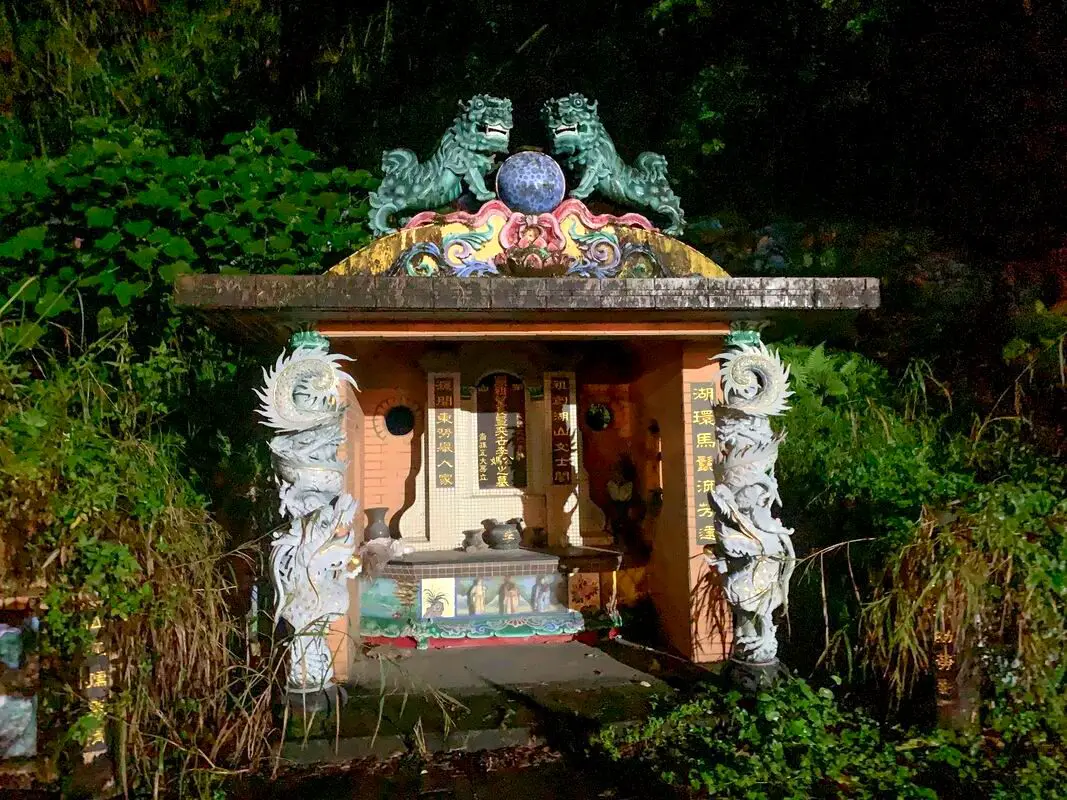
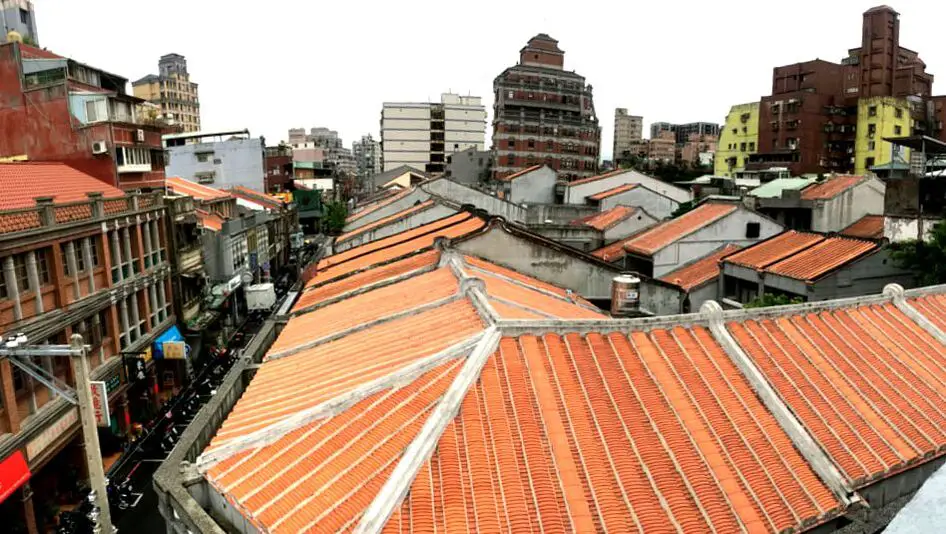
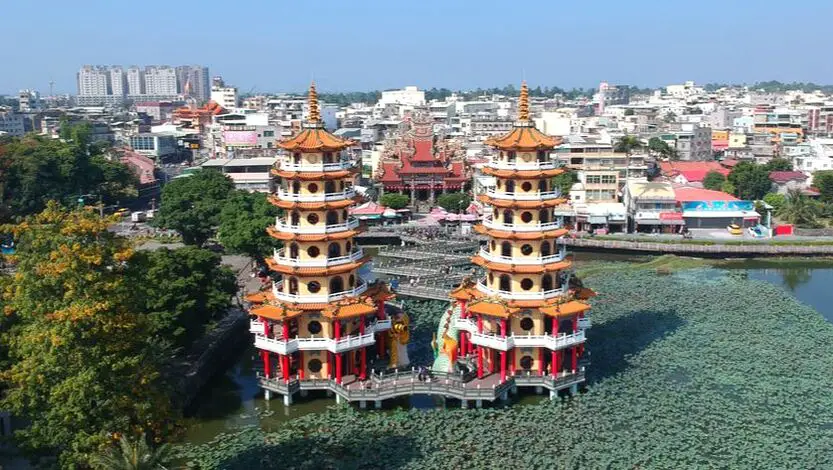
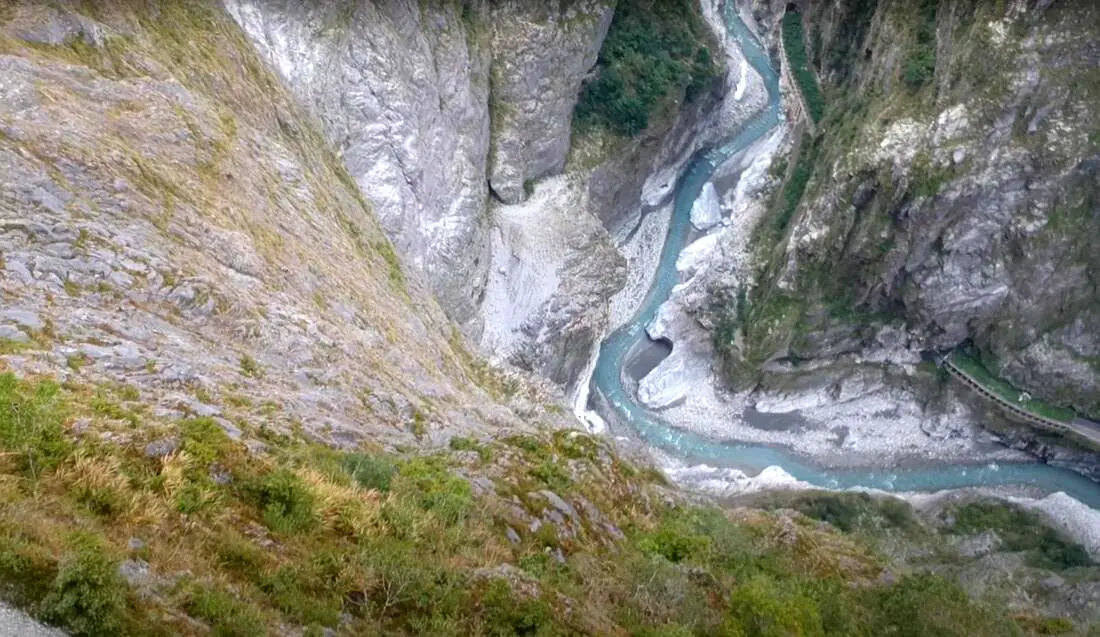
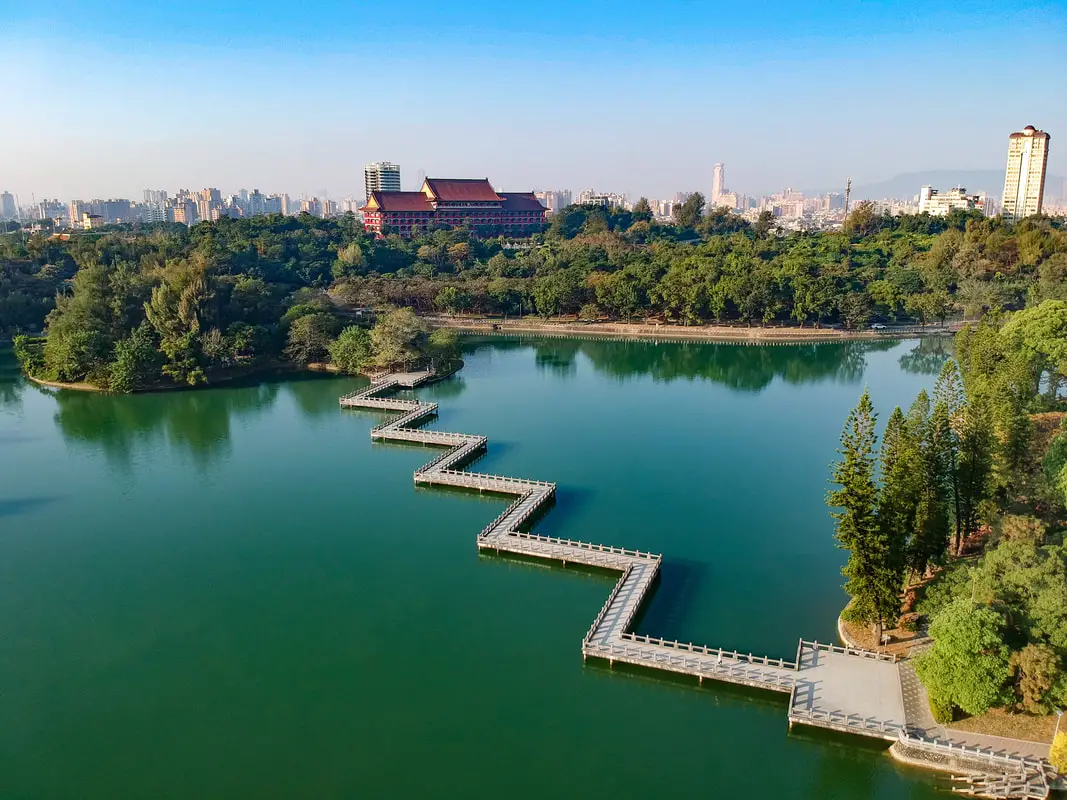
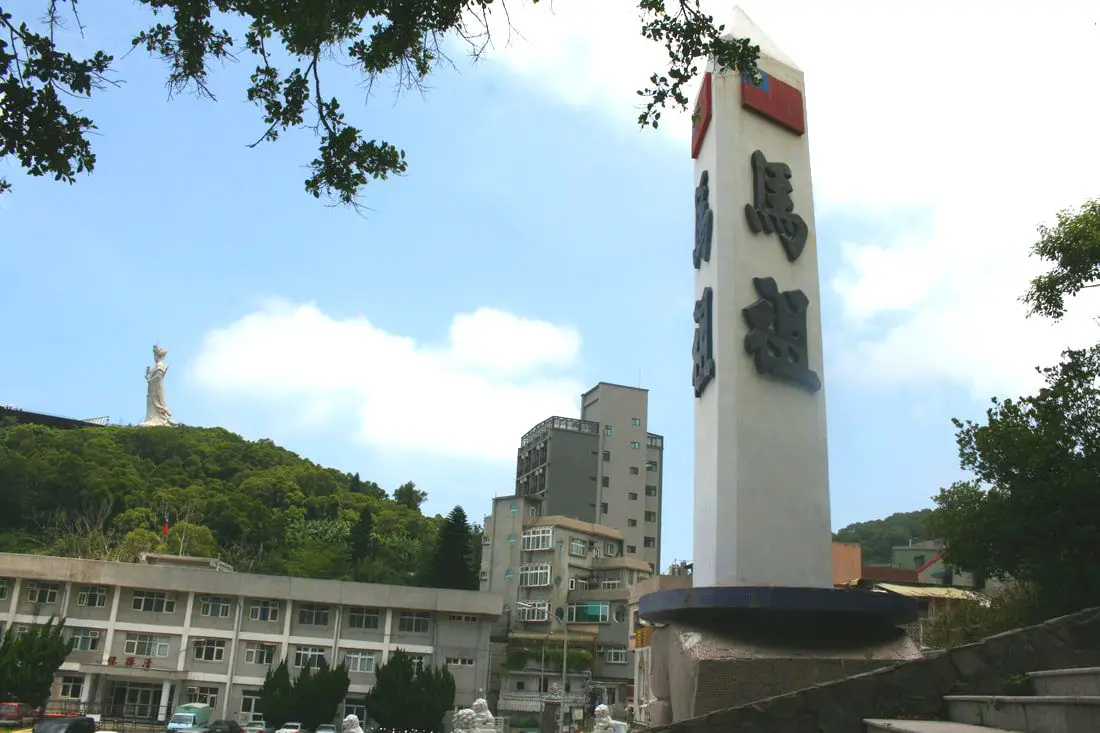
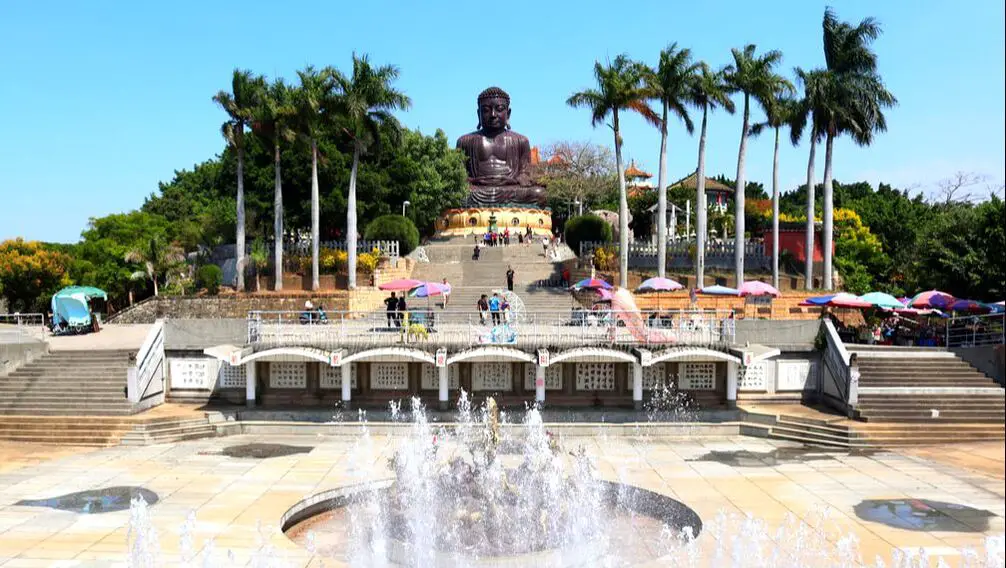




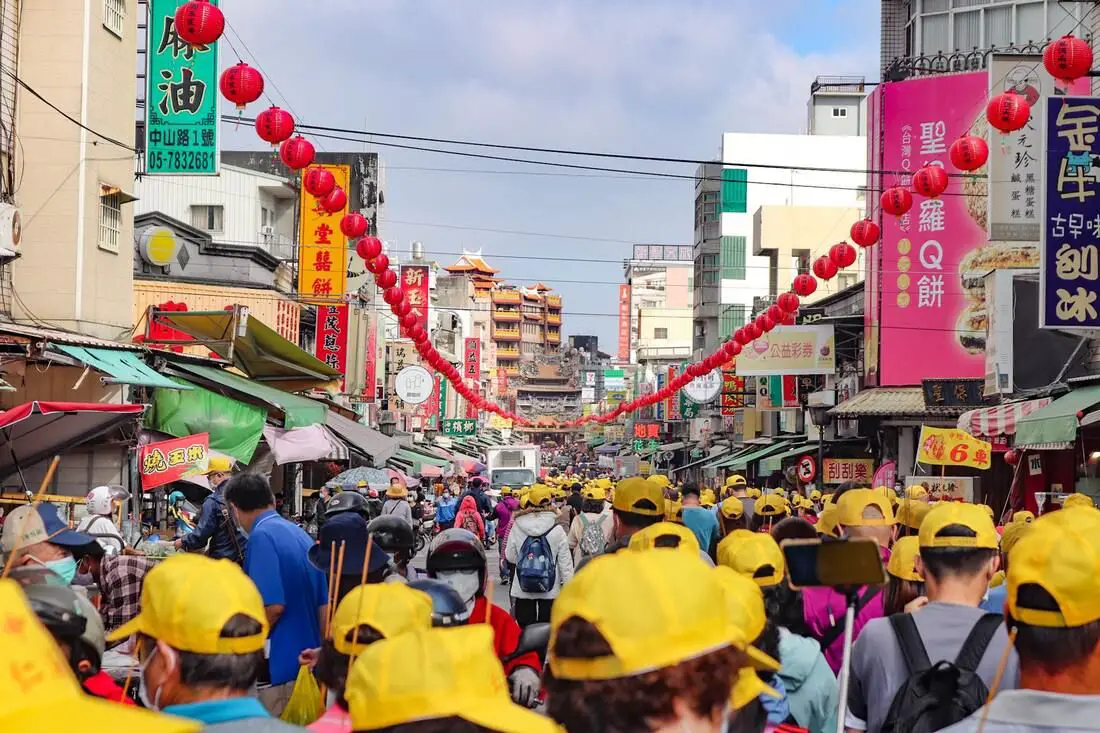
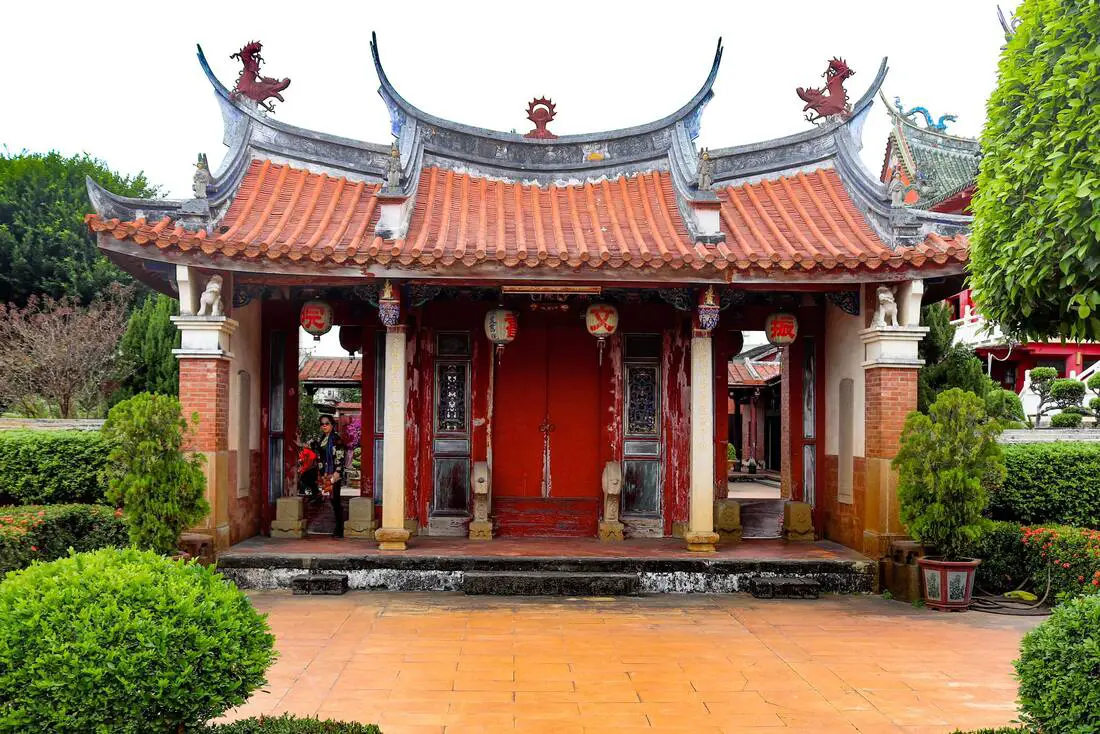
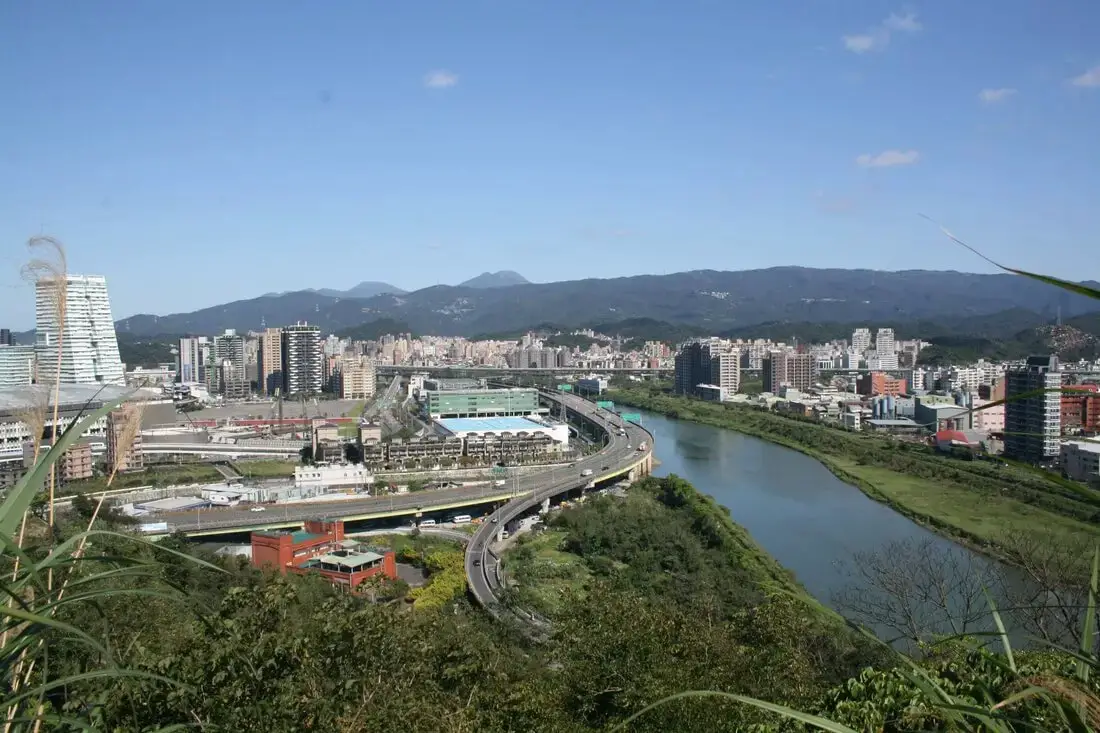
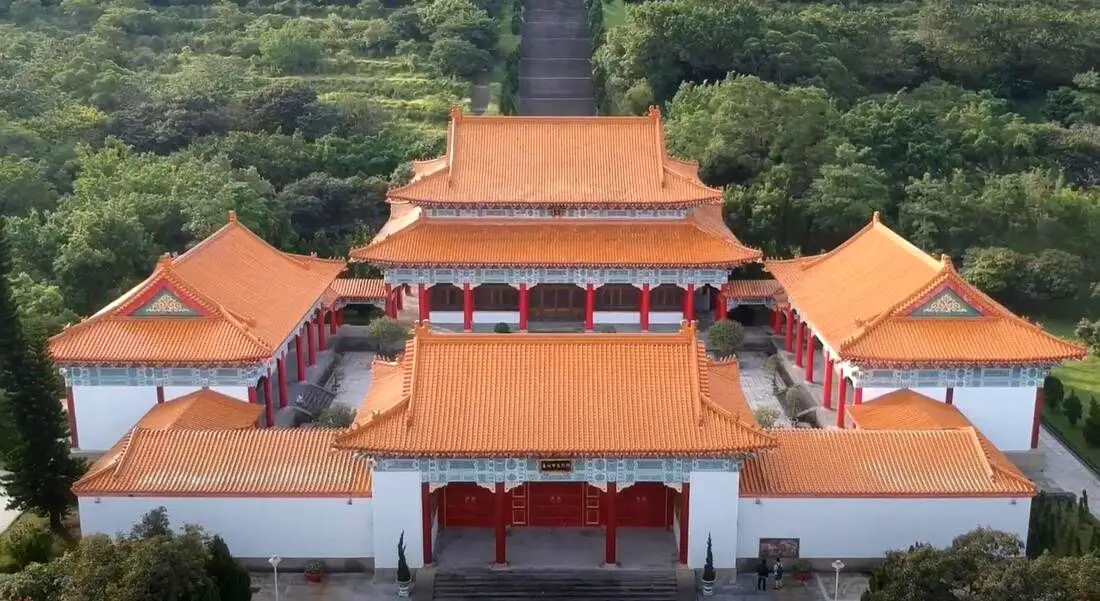
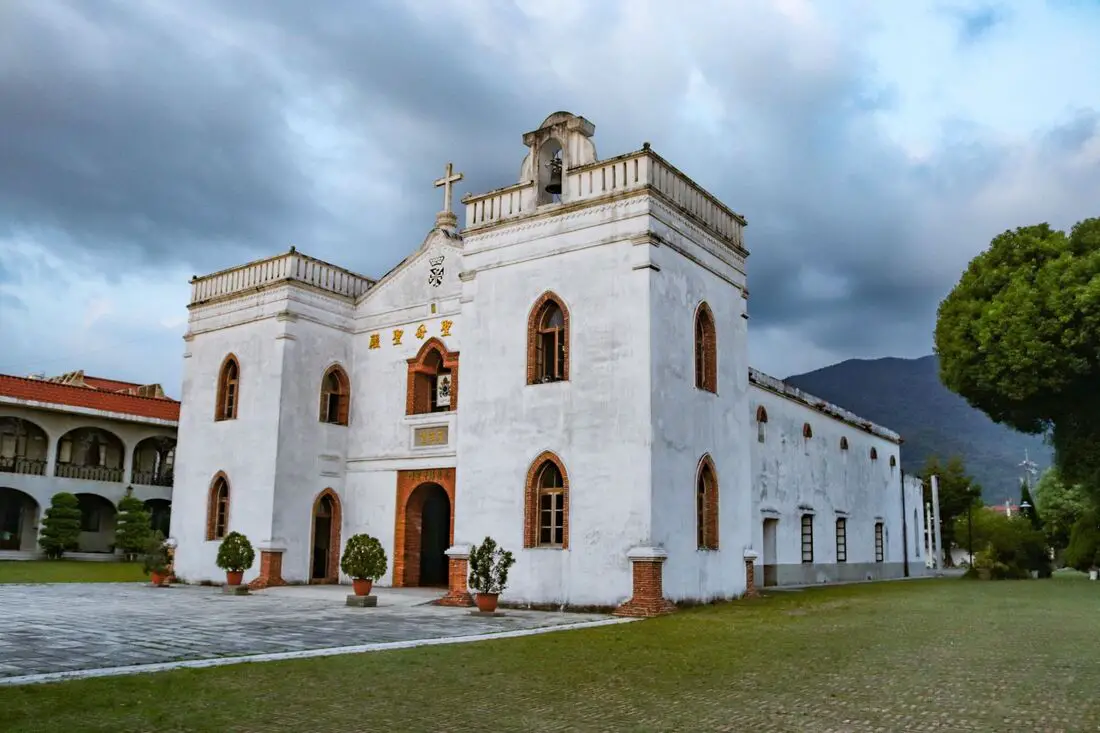
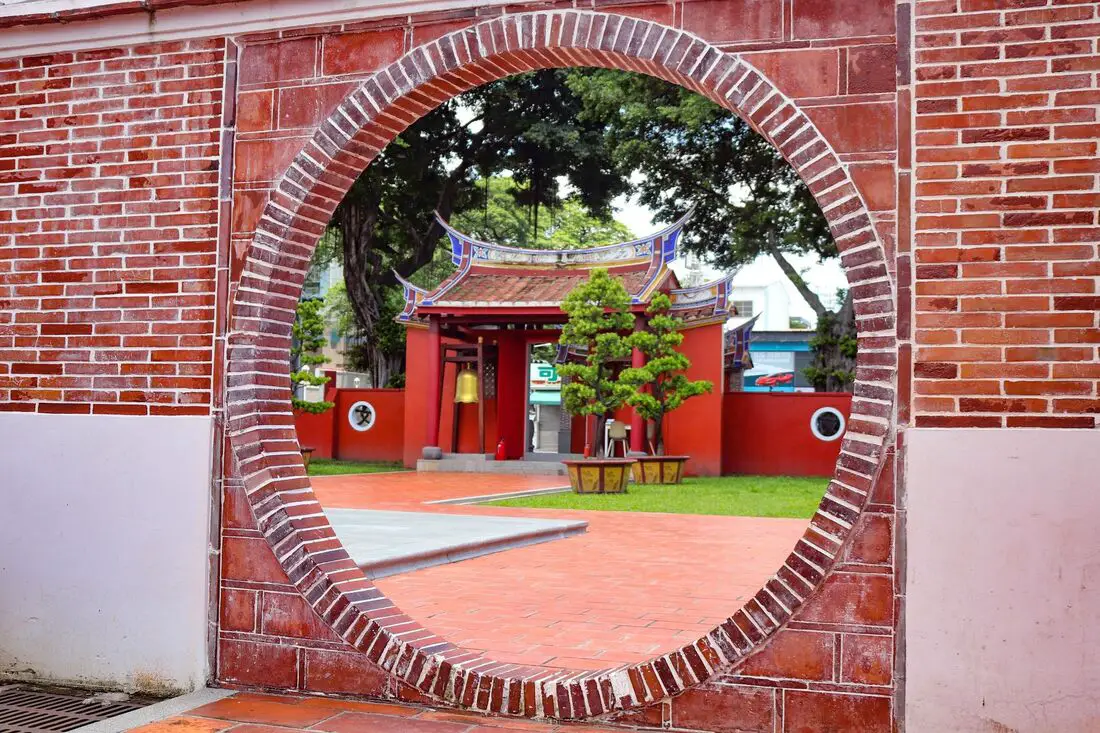
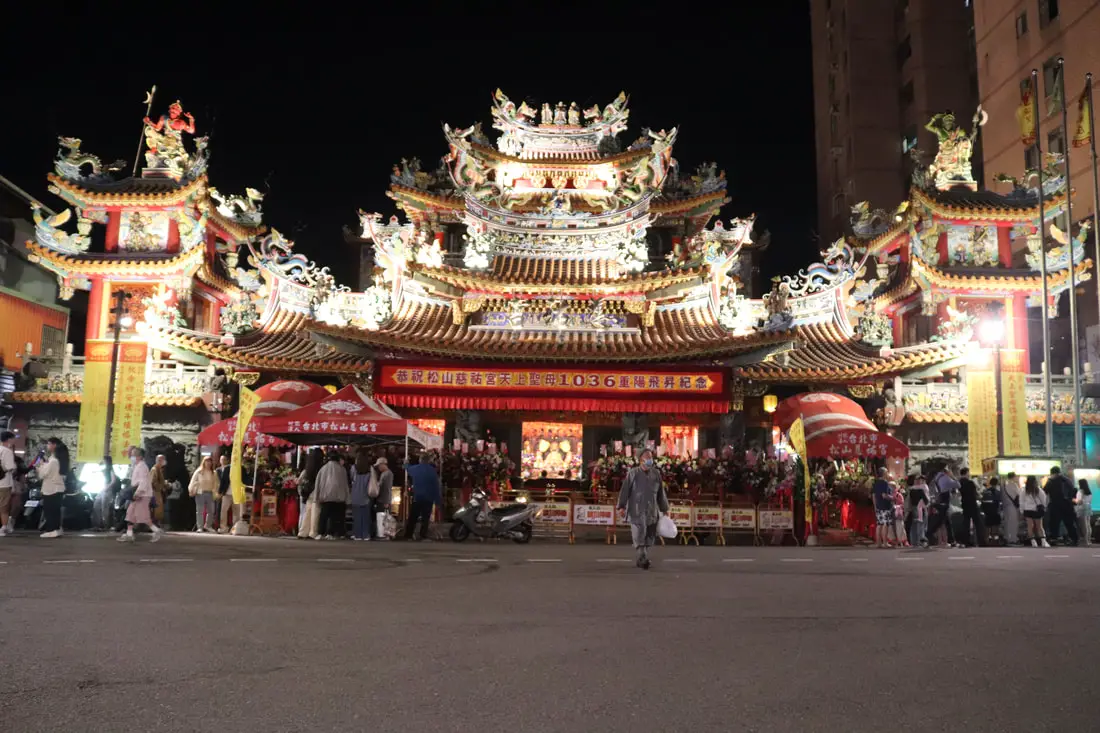
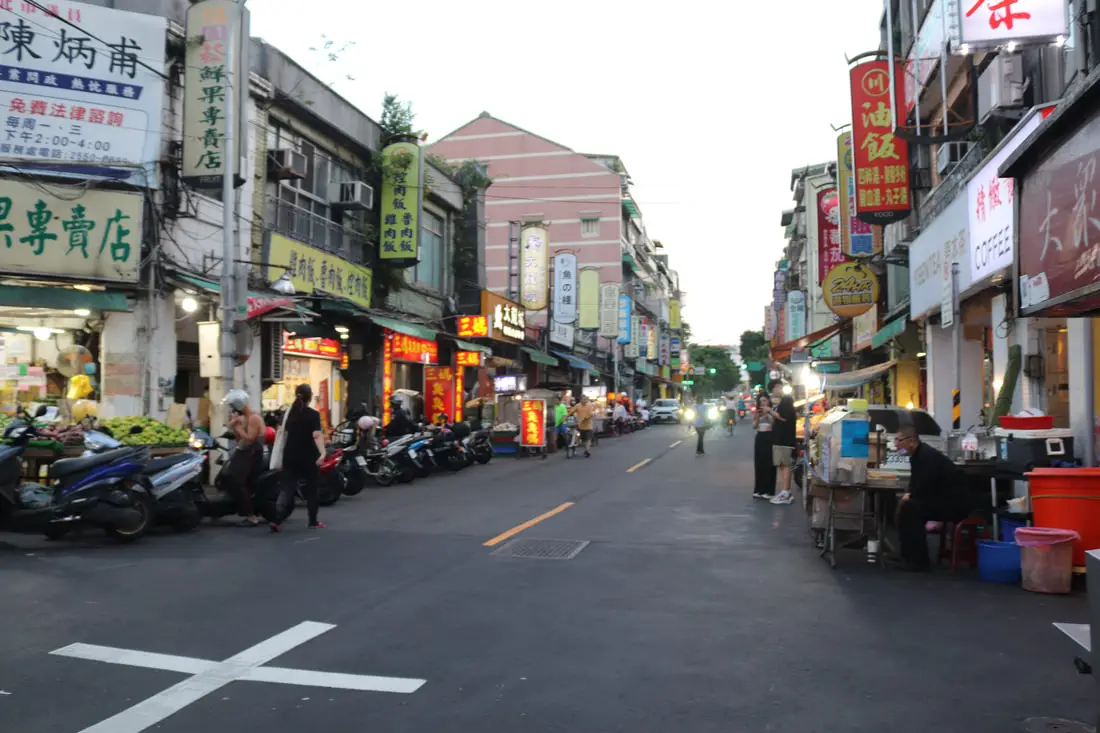
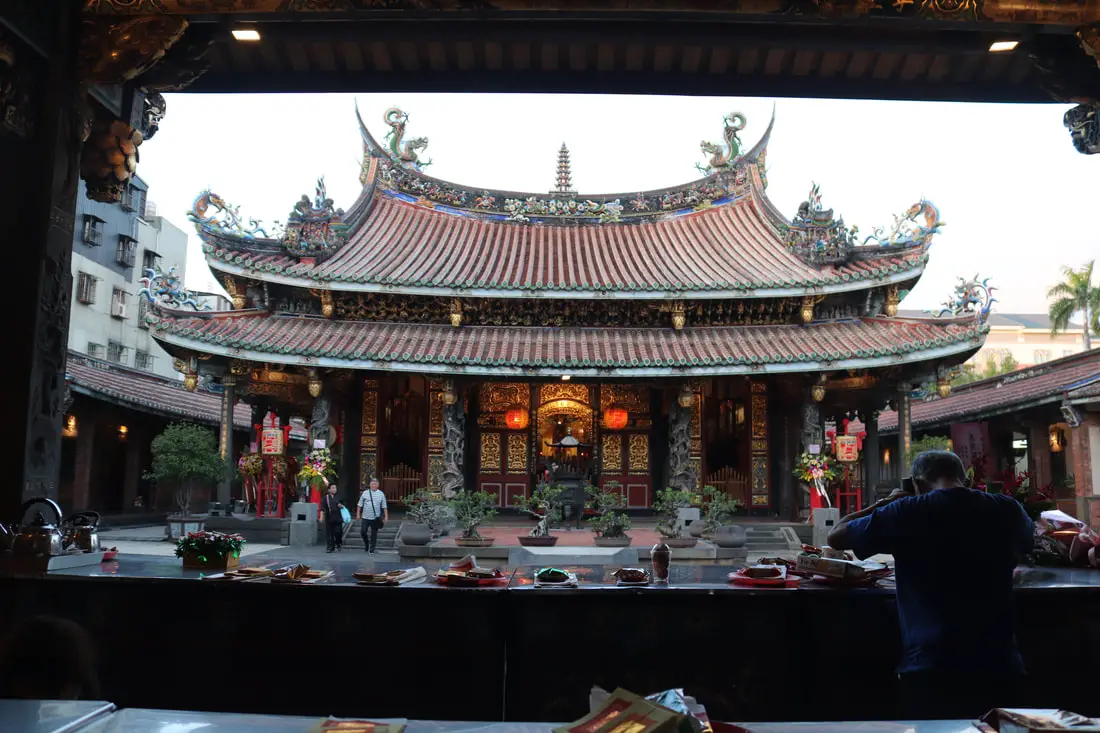
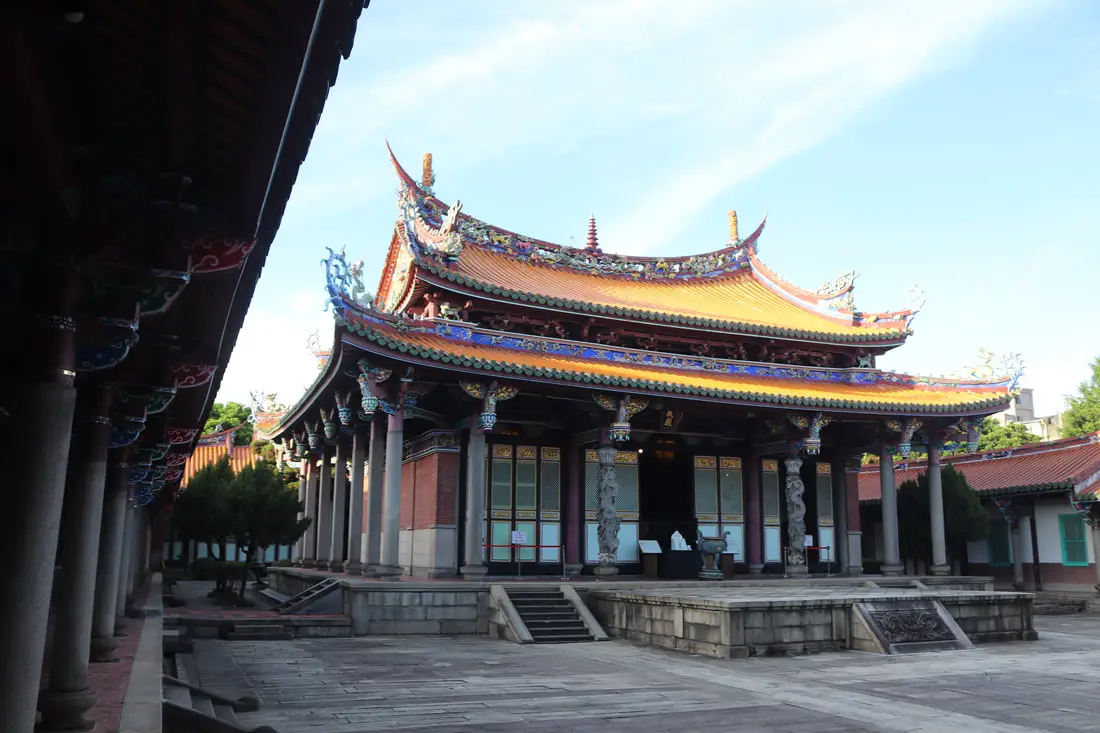
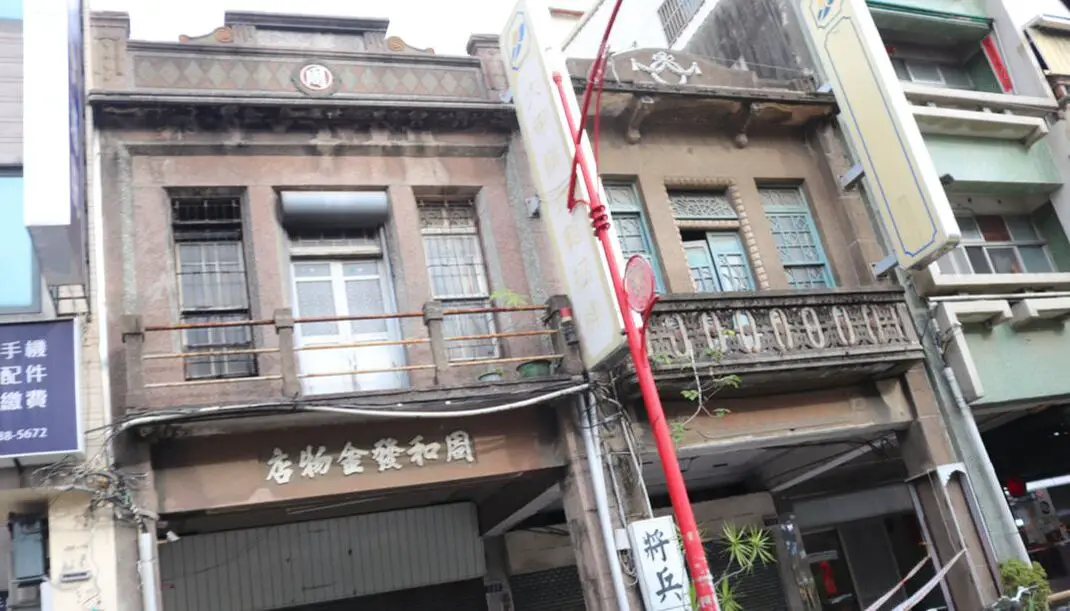
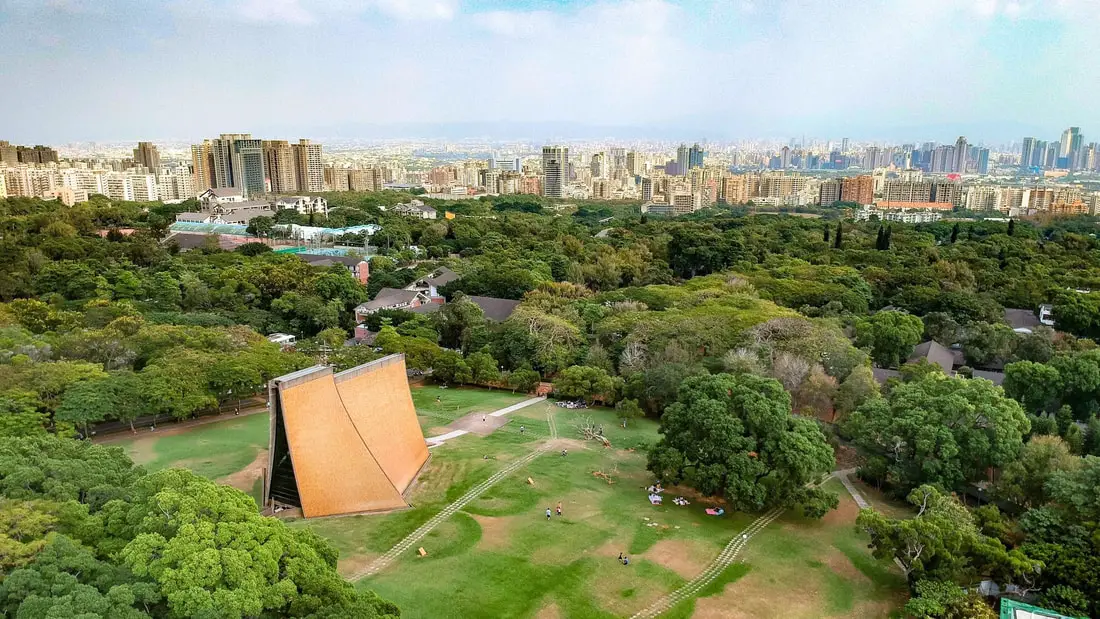
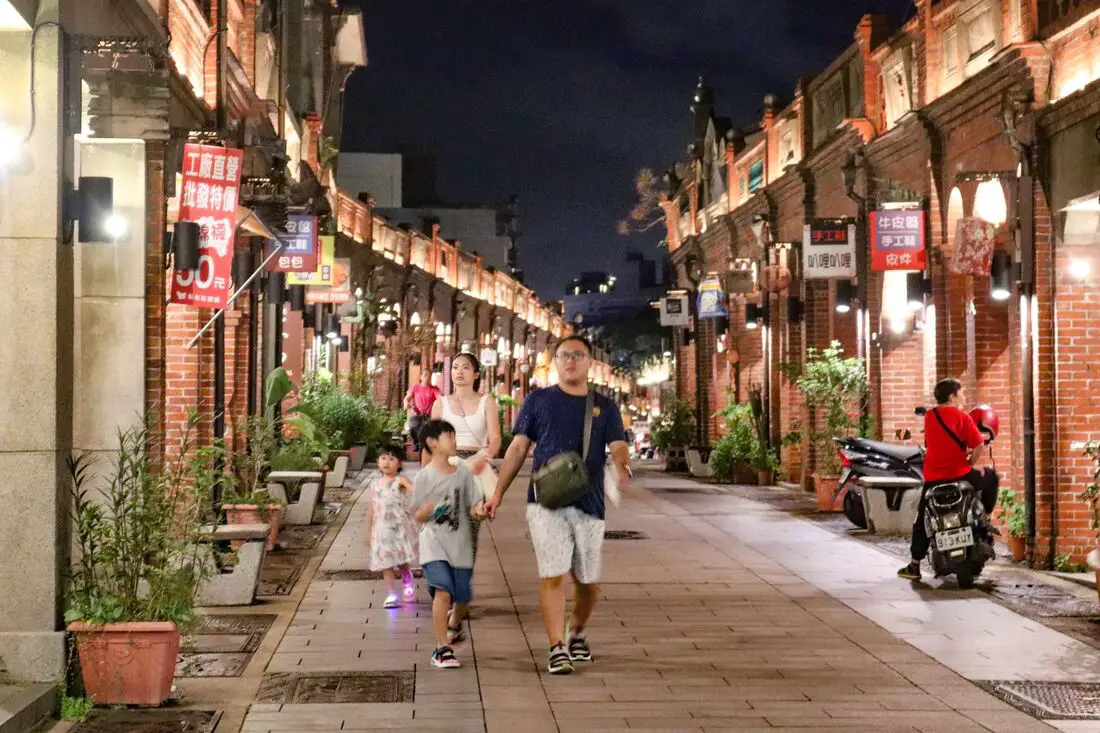
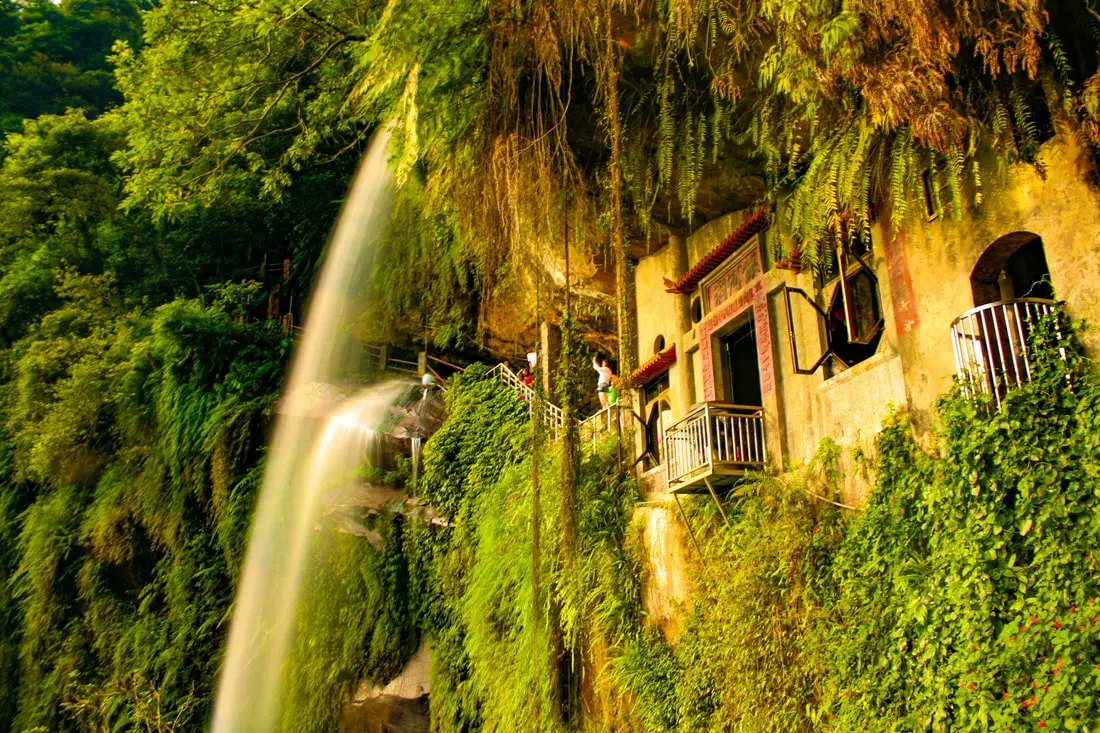
 RSS Feed
RSS Feed
